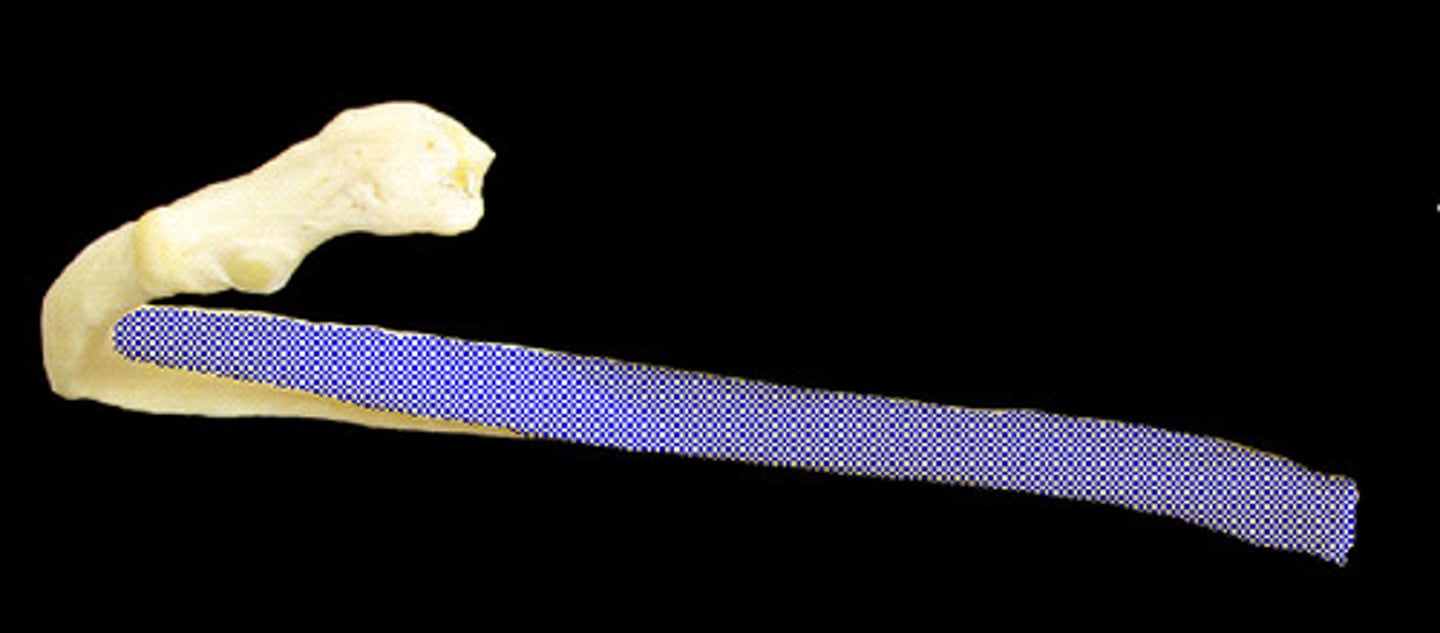Vertebral Column
1/48
There's no tags or description
Looks like no tags are added yet.
Name | Mastery | Learn | Test | Matching | Spaced |
|---|
No study sessions yet.
49 Terms
Cervical Vertebrae (C1-C7)
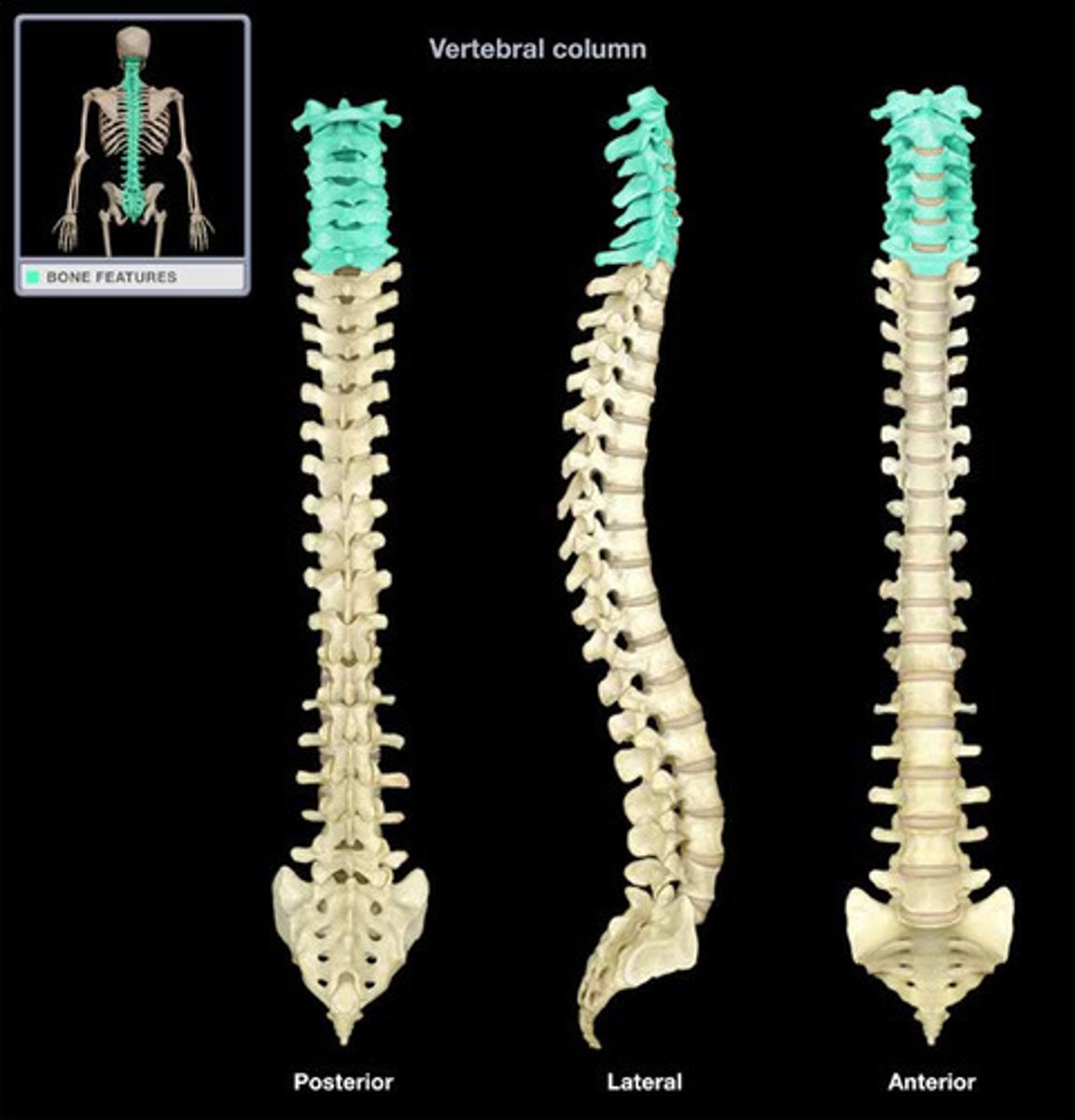
Thoracic Vertebrae (T1-T12)

Lumbar Vertebrae (L1-L5)
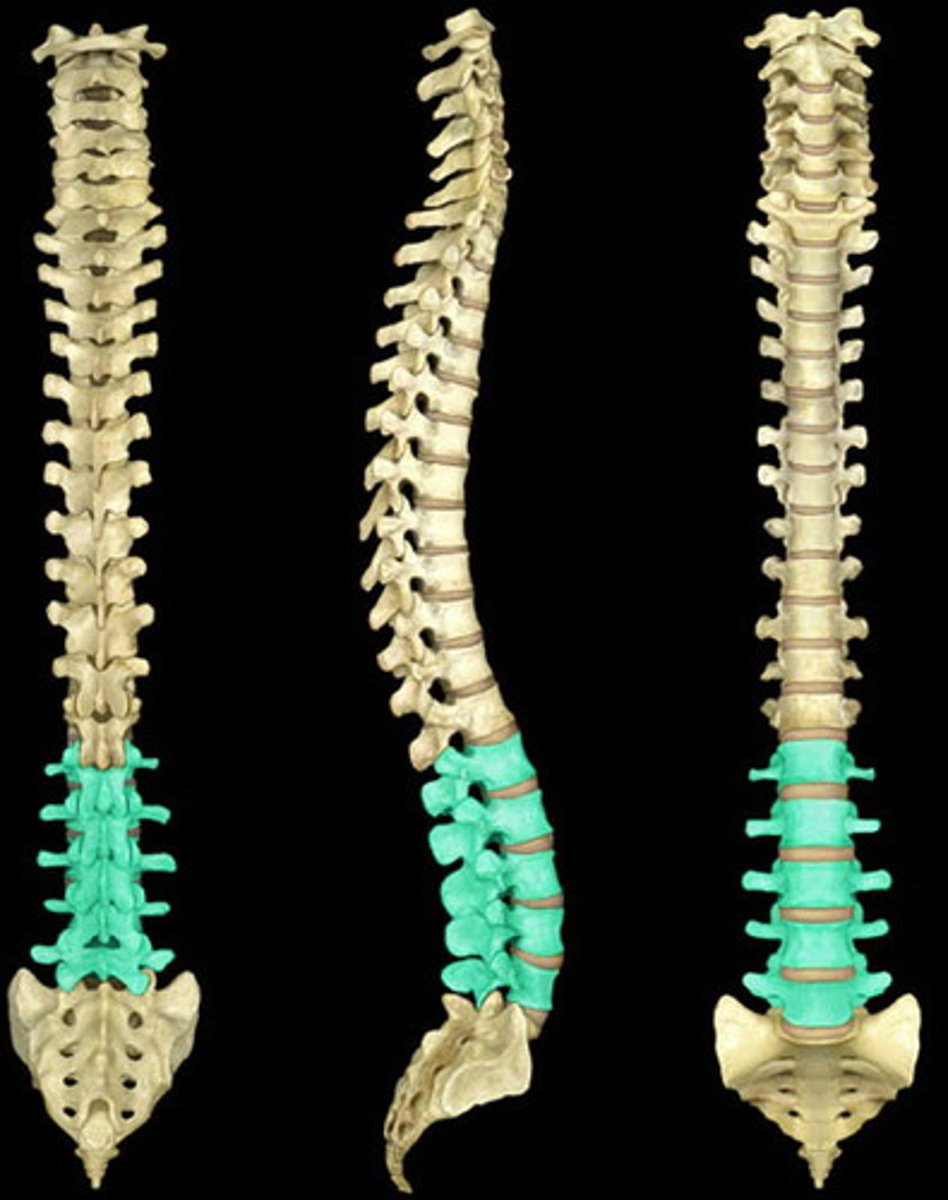
Sacrum
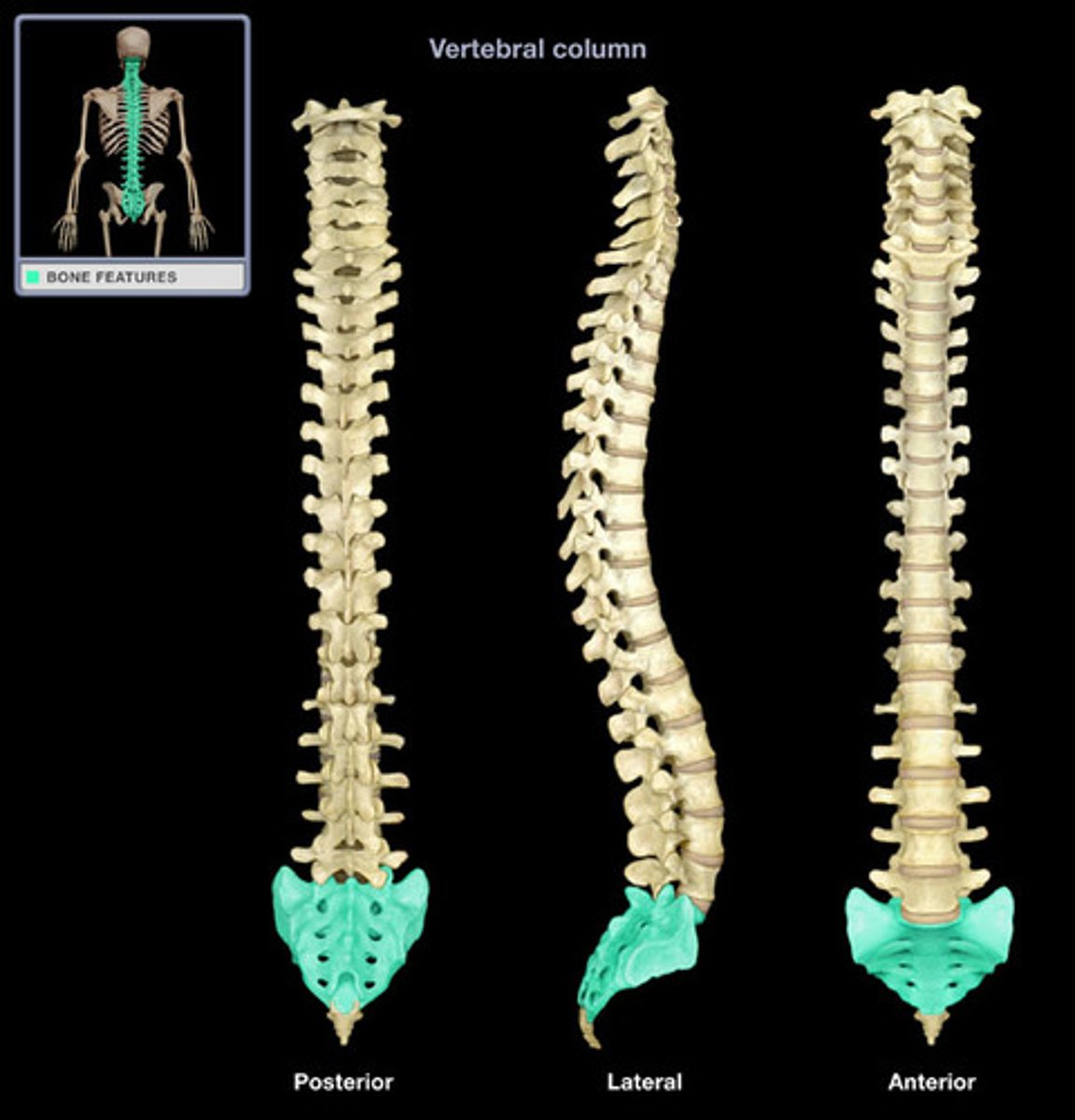
Coccyx
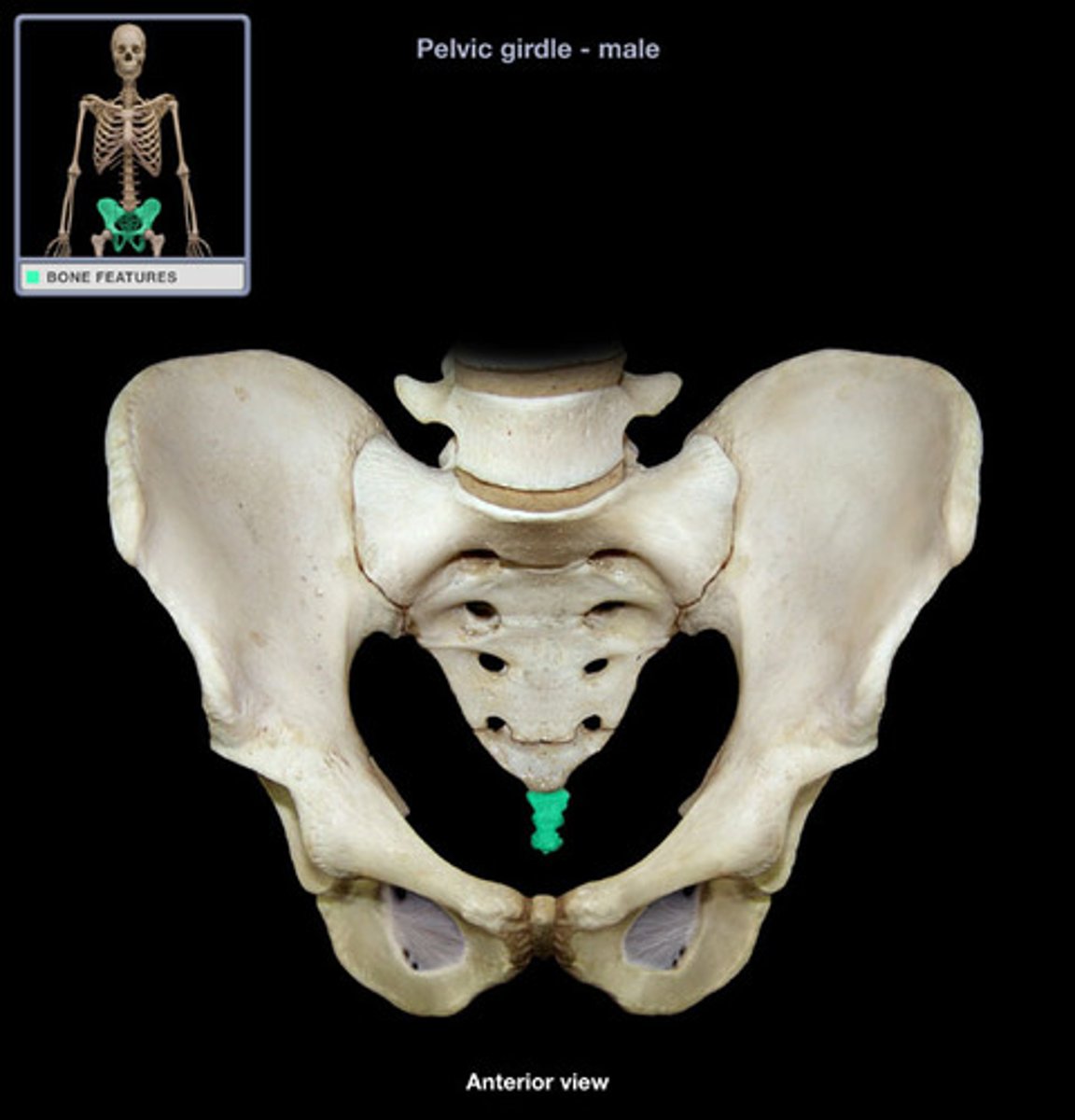
Curvature
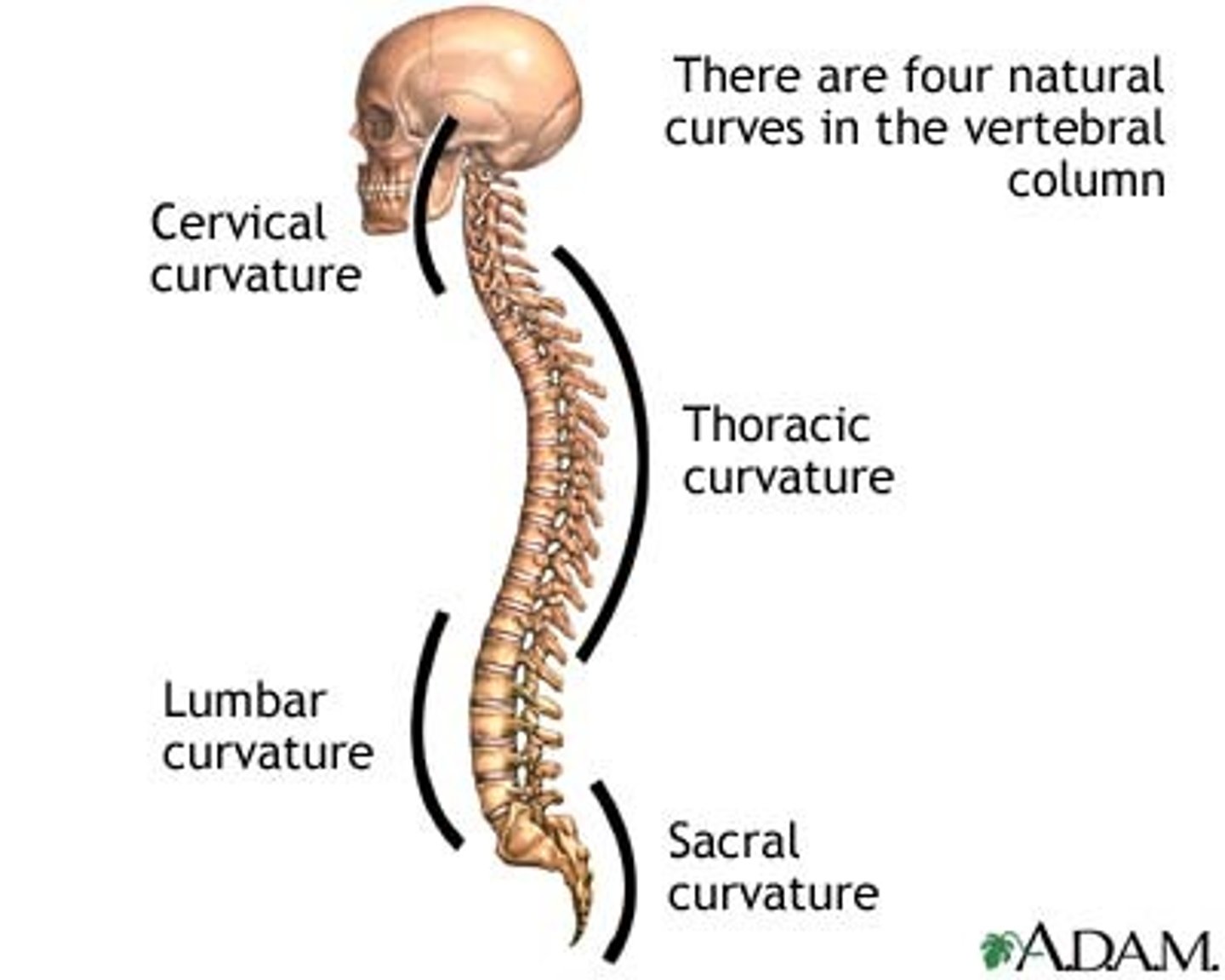
Kyphosis
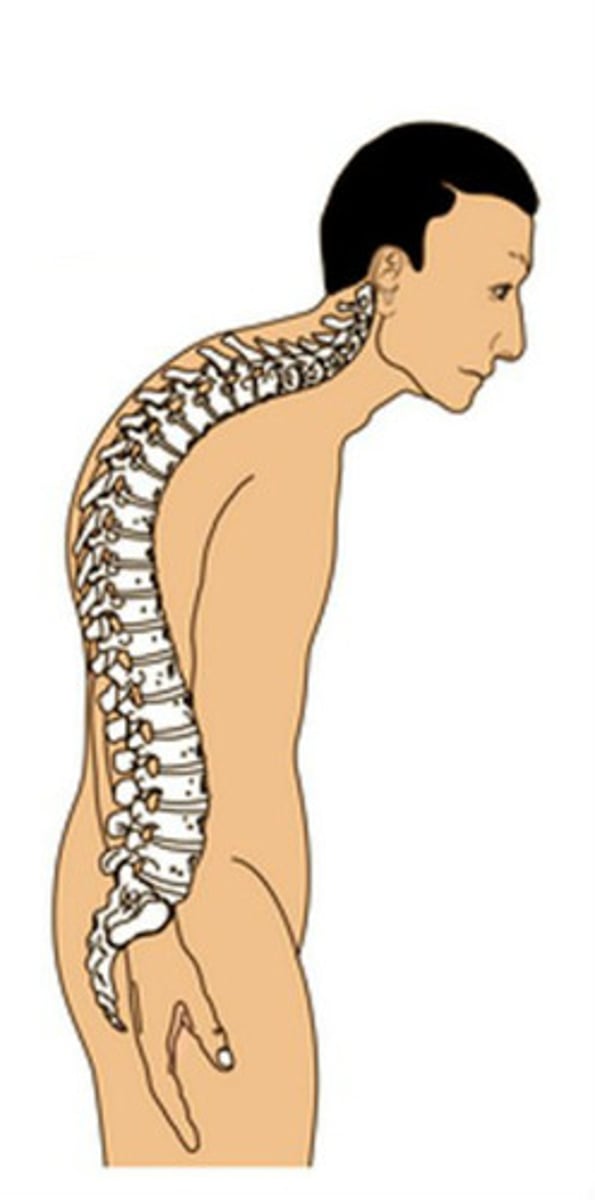
Lordosis
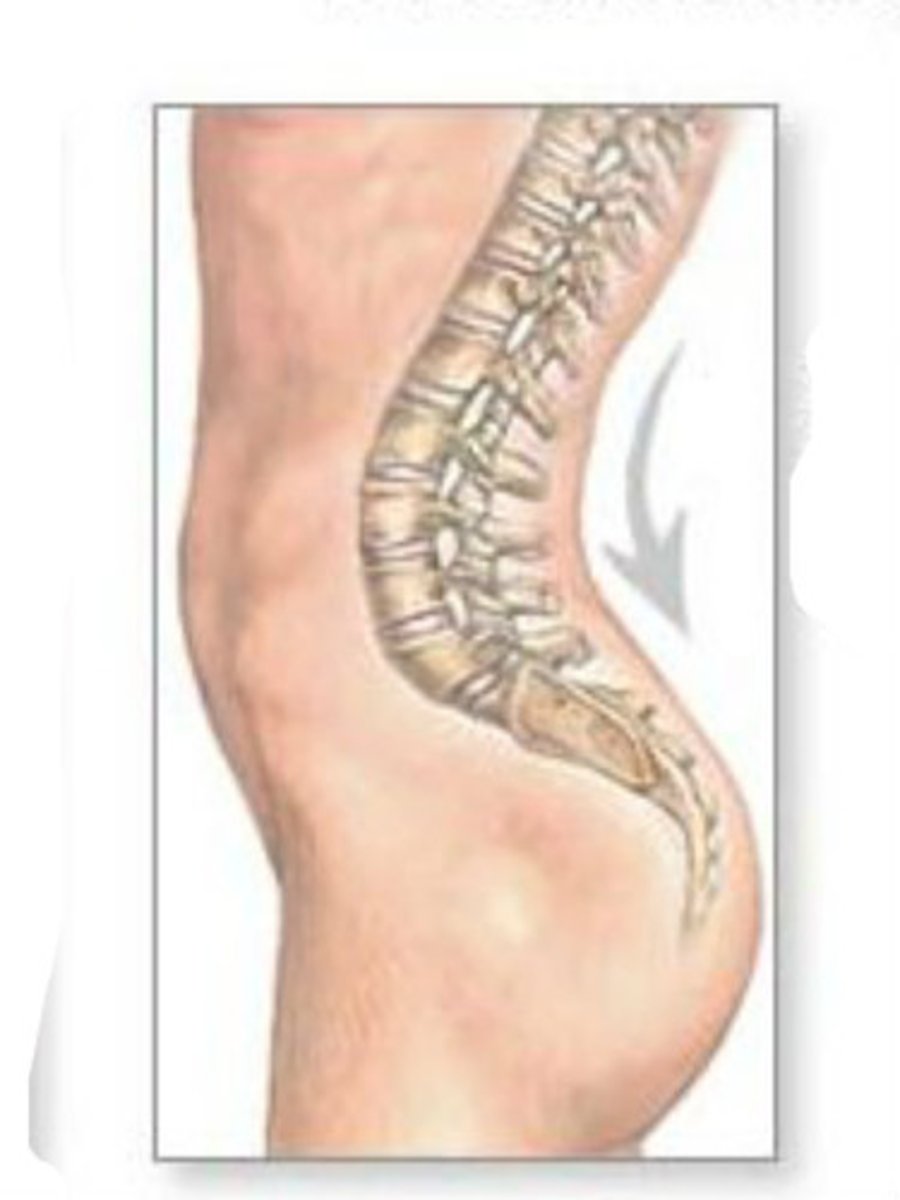
Scoliosis
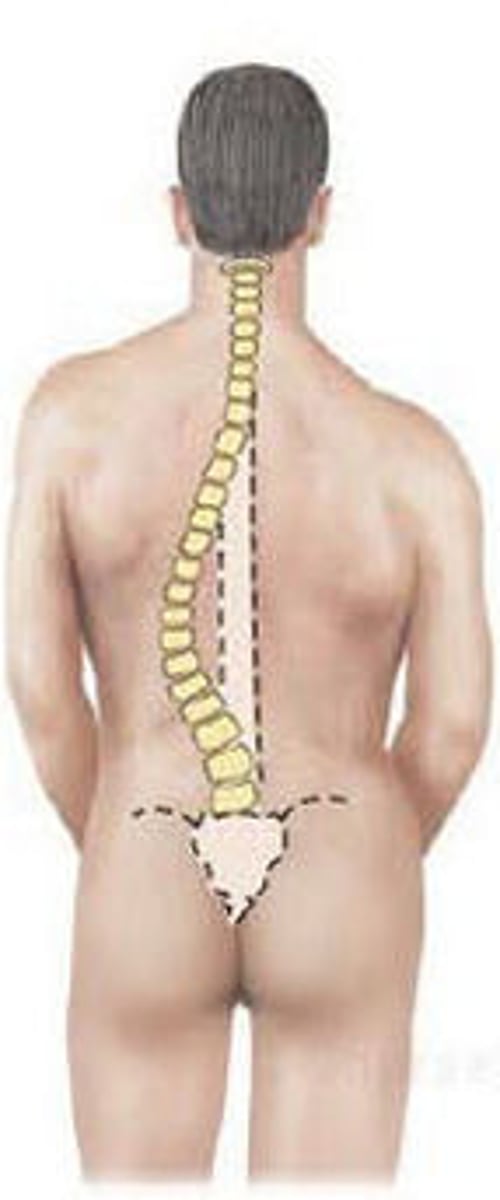
intervertebral foramen
Lateral openings in the vertebral column that are formed by two adjoining vertebrae, allow spinal nerves to enter and exit the vertebral column
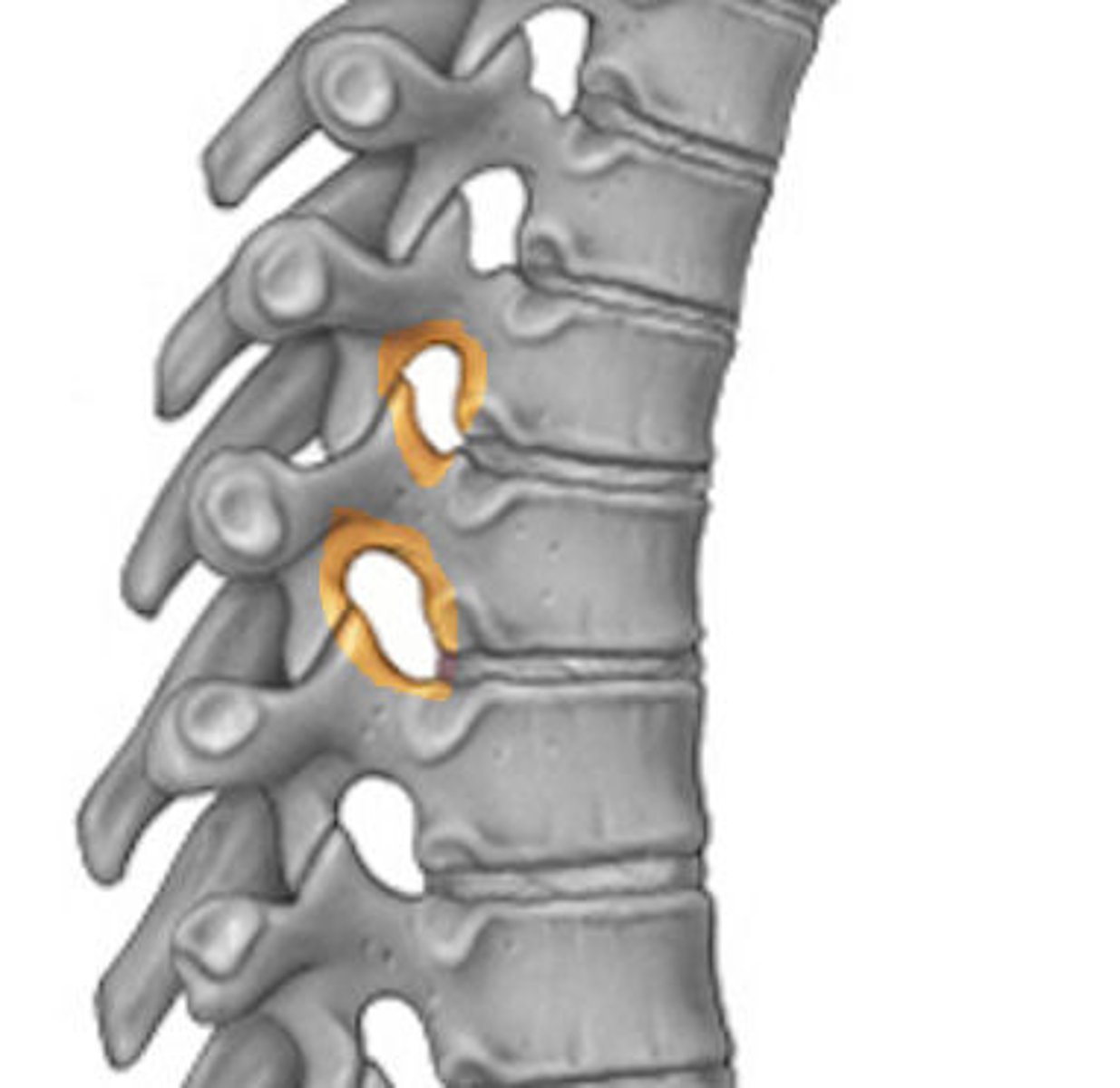
Intervertebral discs
fibrocartilage pads that separate and cushion the vertebrae, 25% of columns height
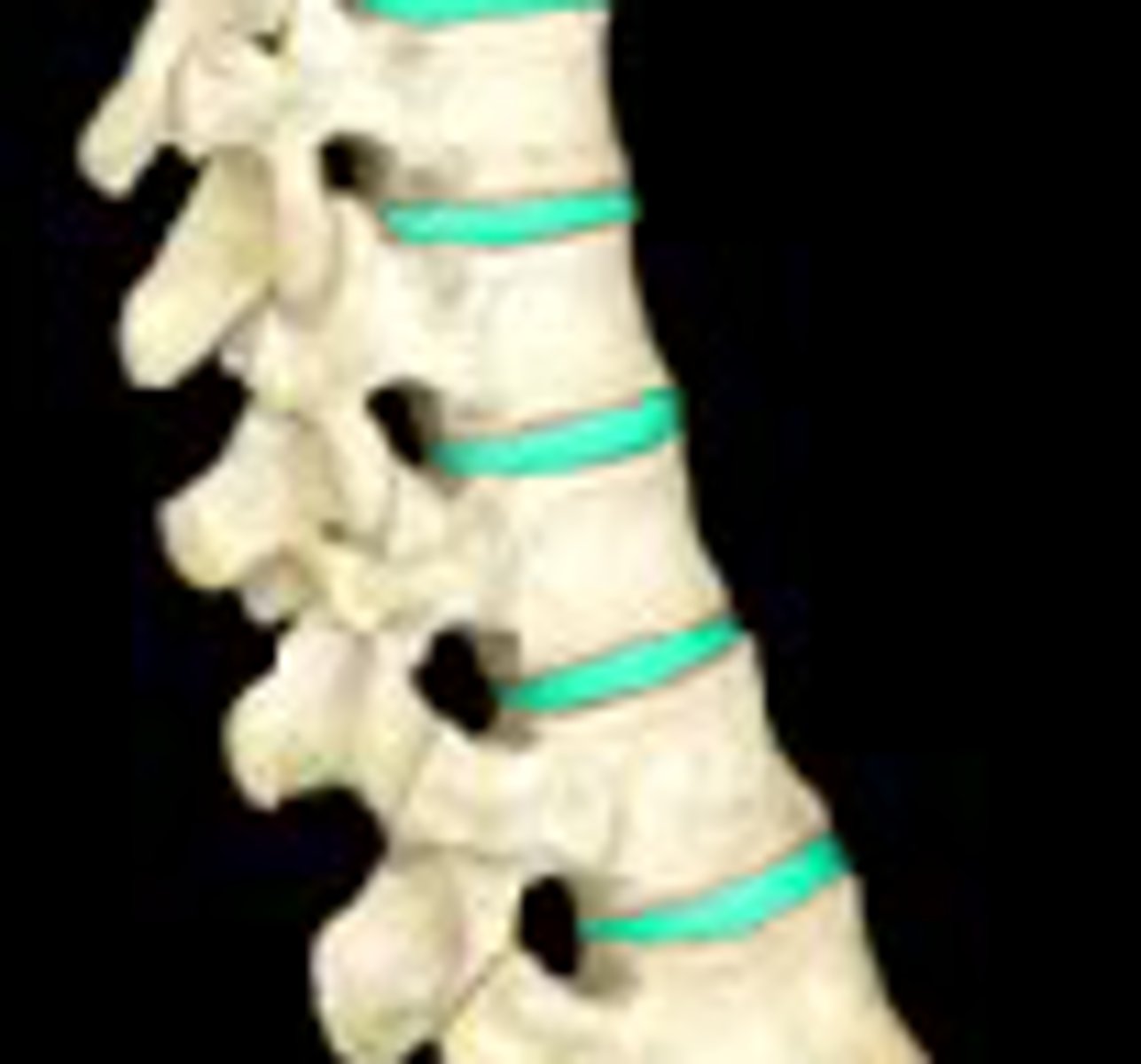
Nucleus Pulposus
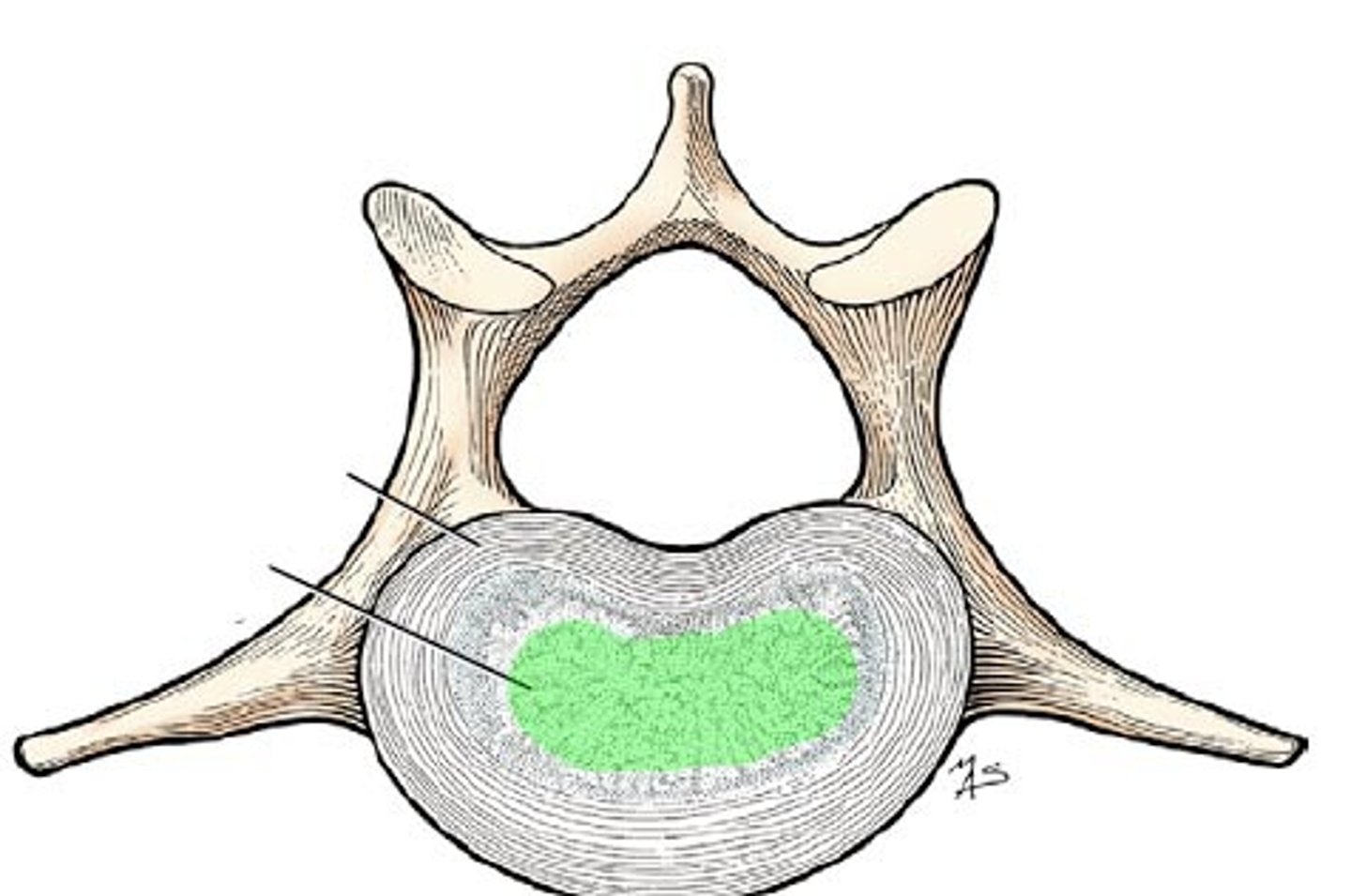
Annulus Fibrosus
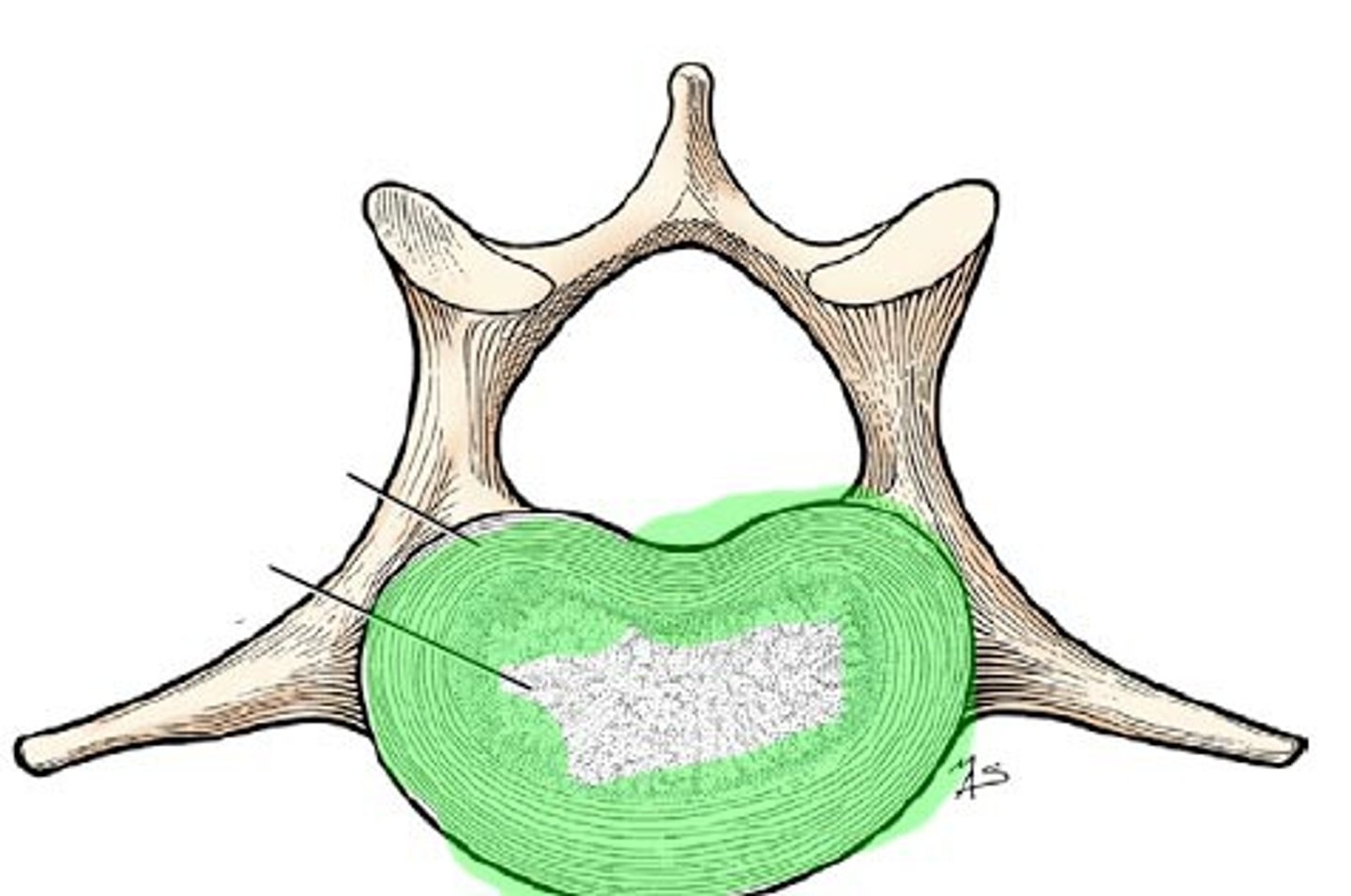
Herniated disc
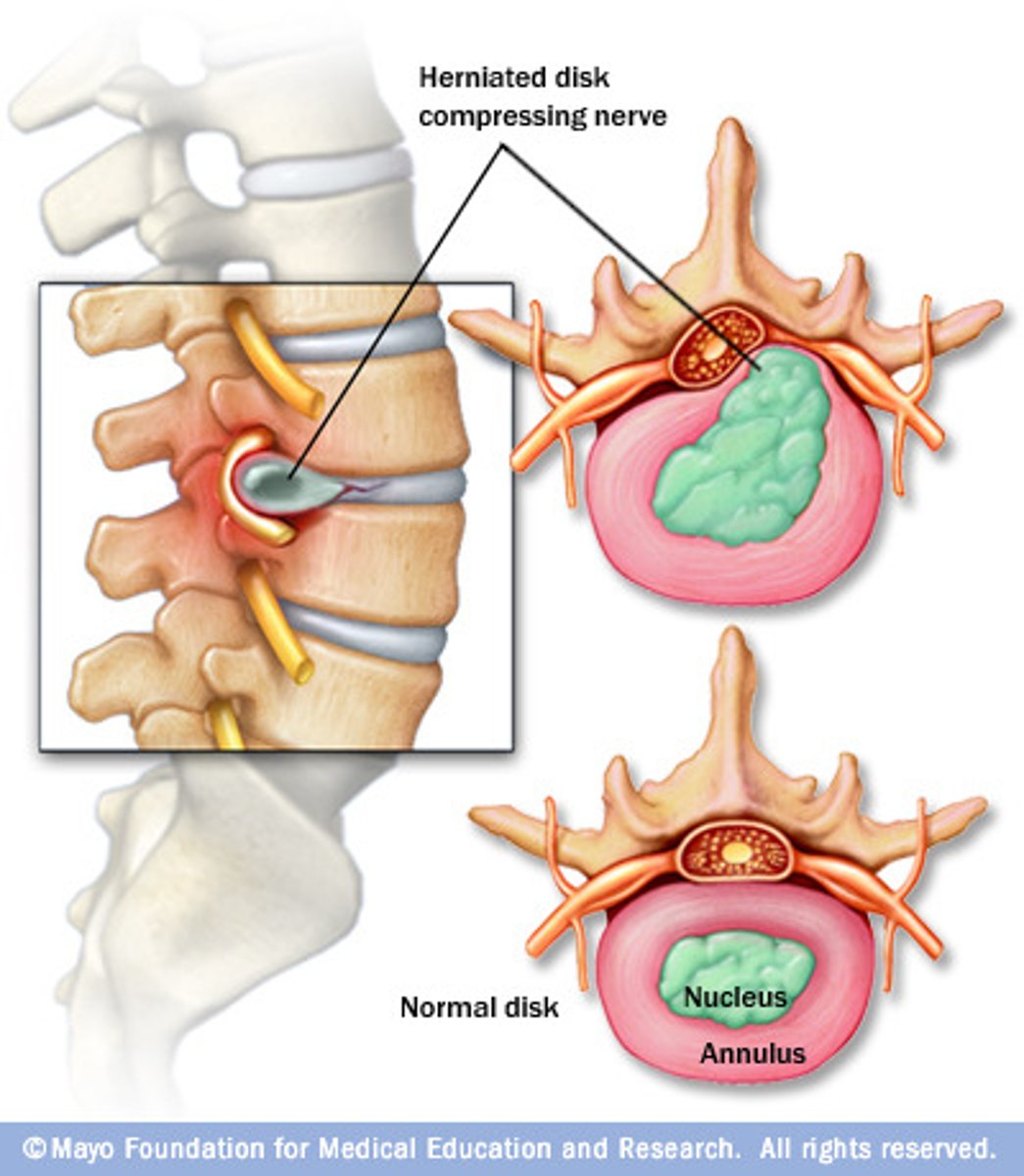
Treatment for a herniated disc
laminectomy
body of vertebrae
the thick, disc-shaped anterior portion which is the weight bearing portion
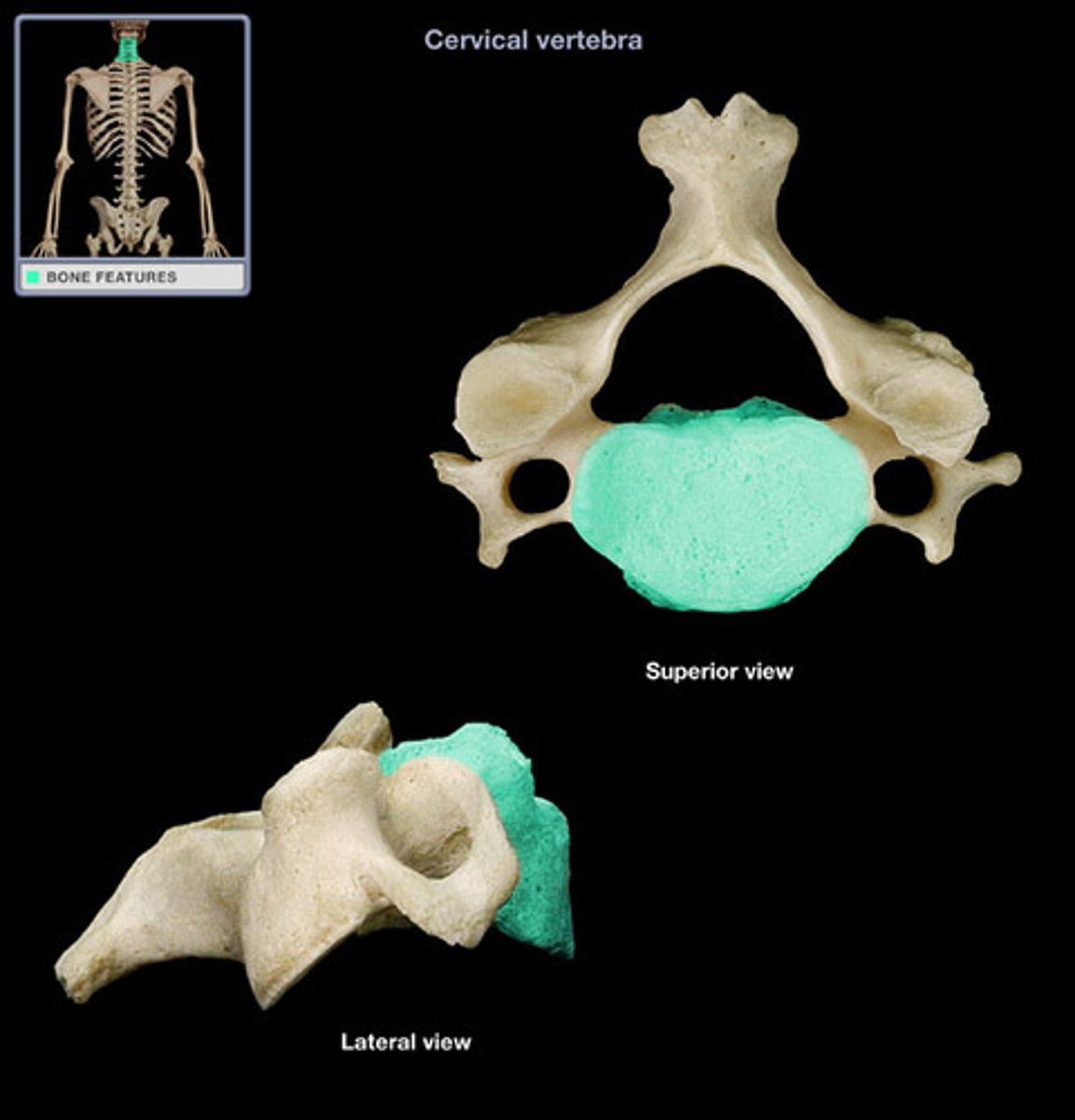
vertebral foramen
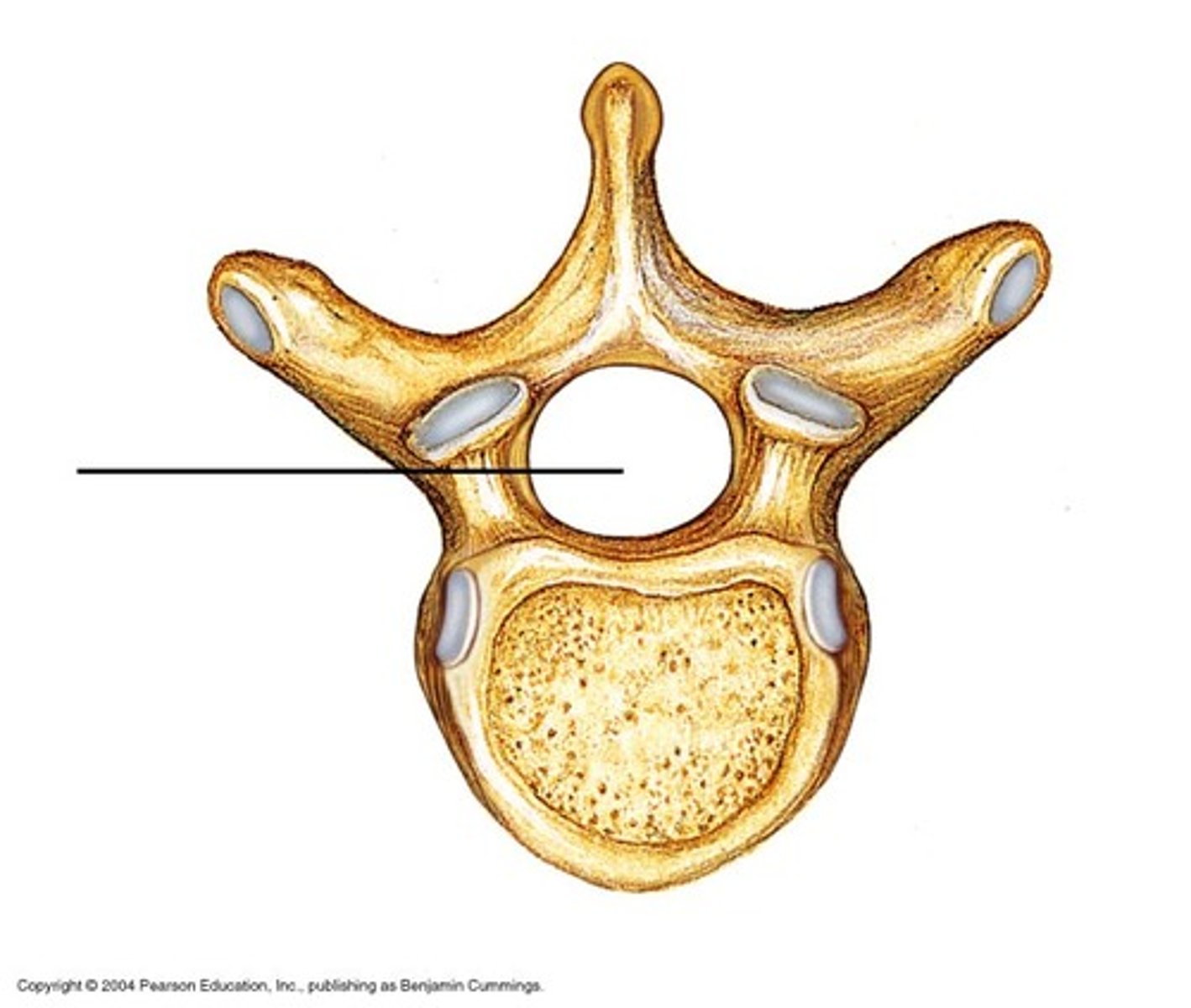
pedicle
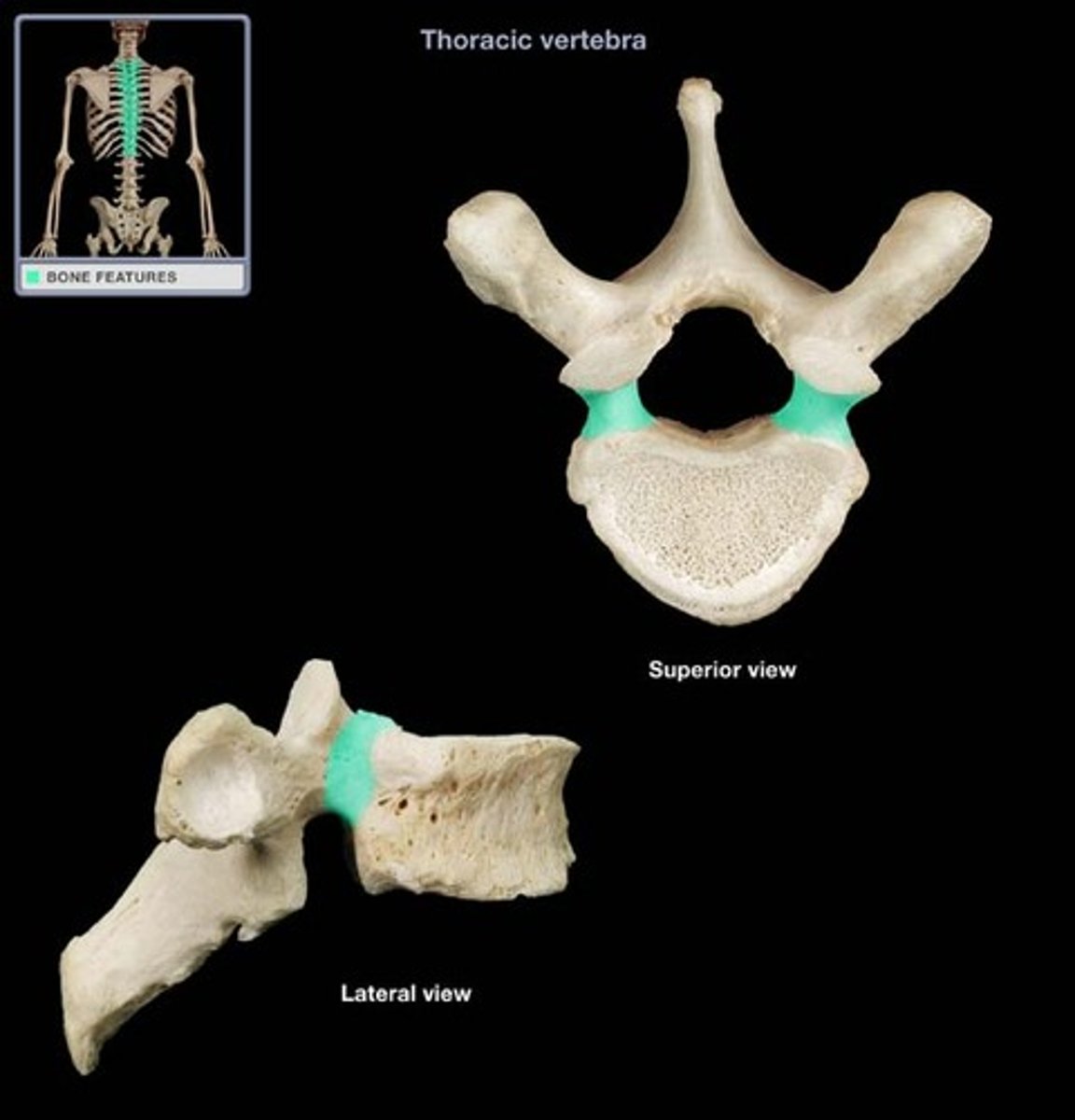
Lamina
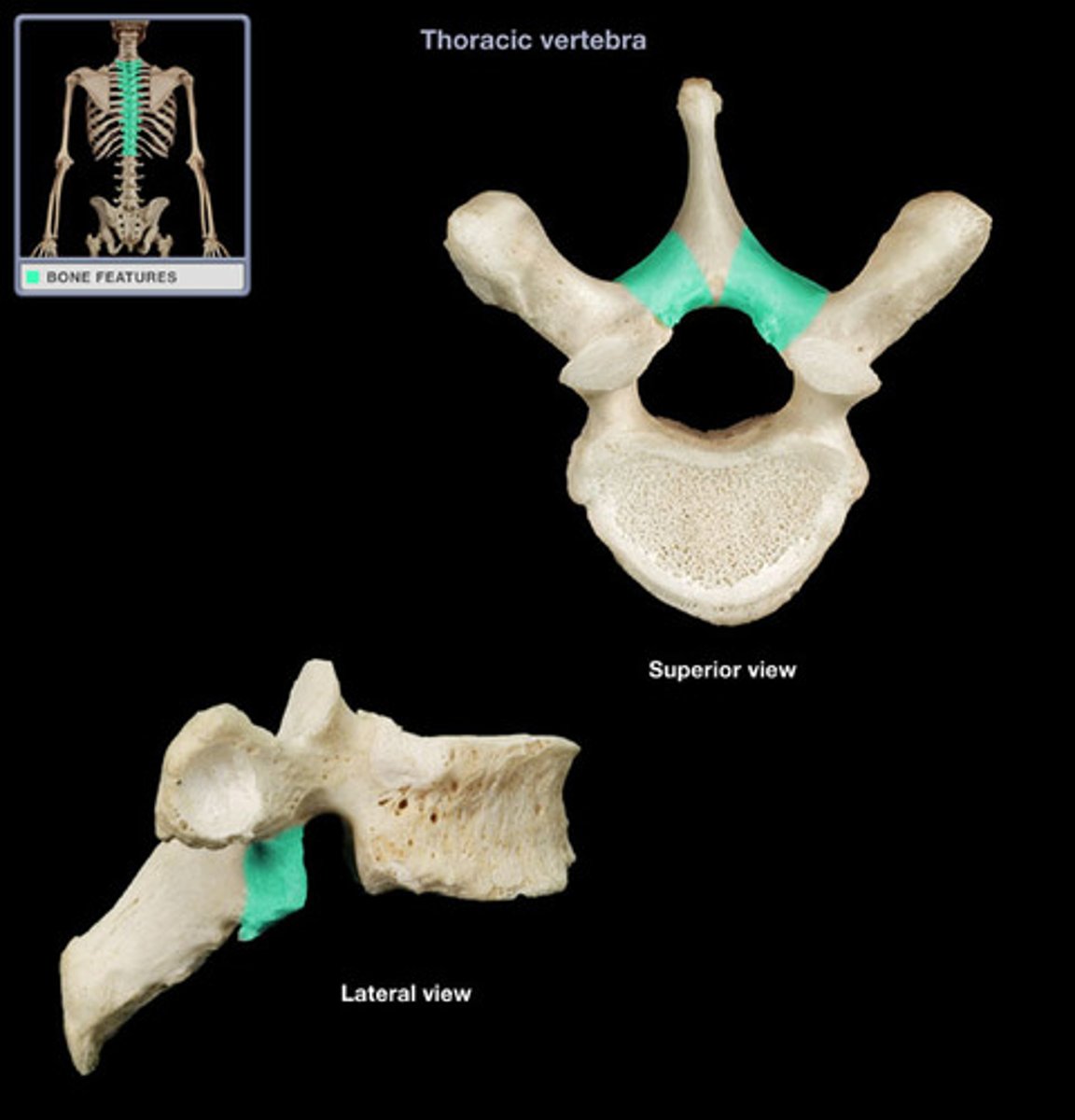
transverse process
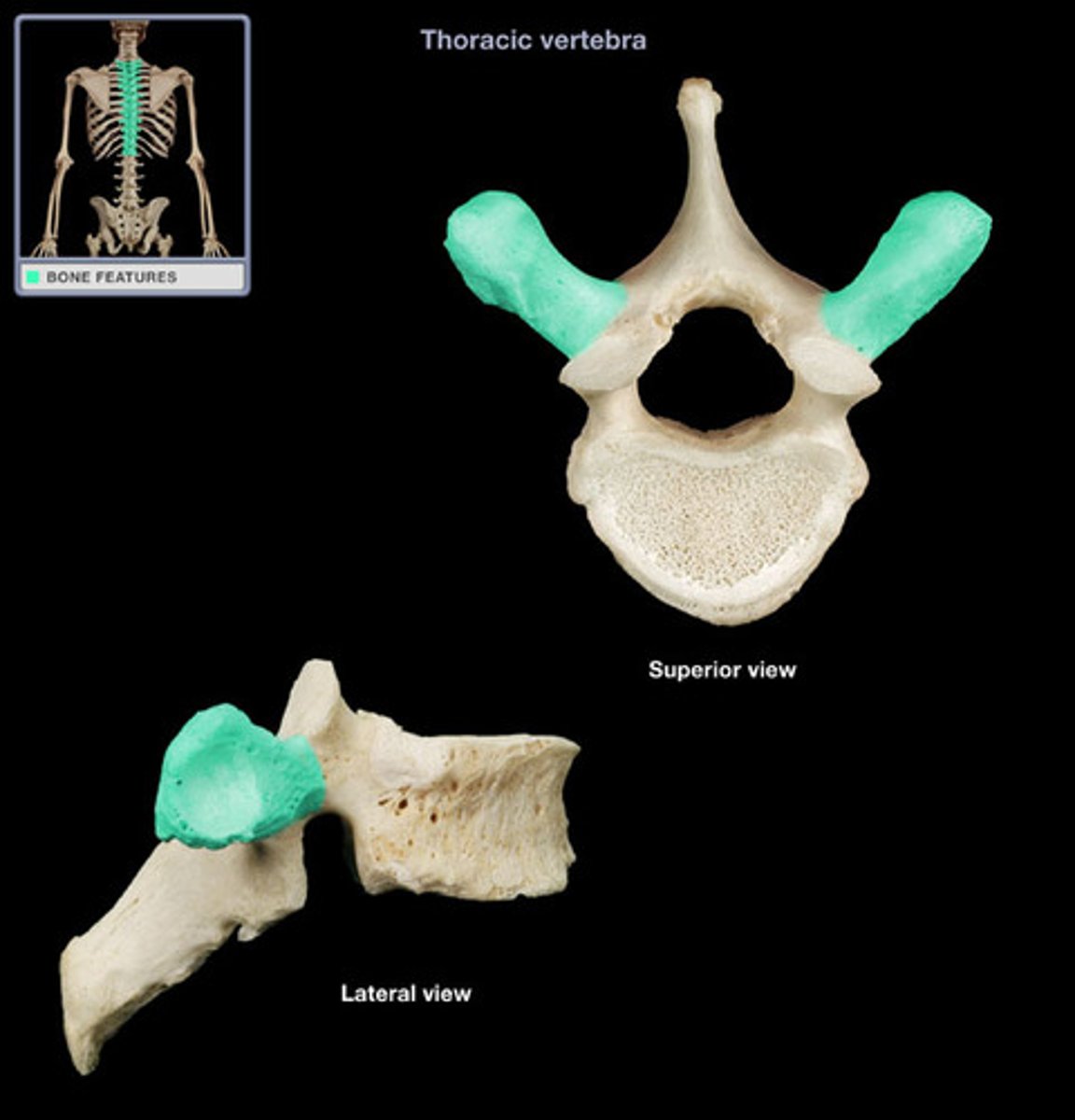
spinous process
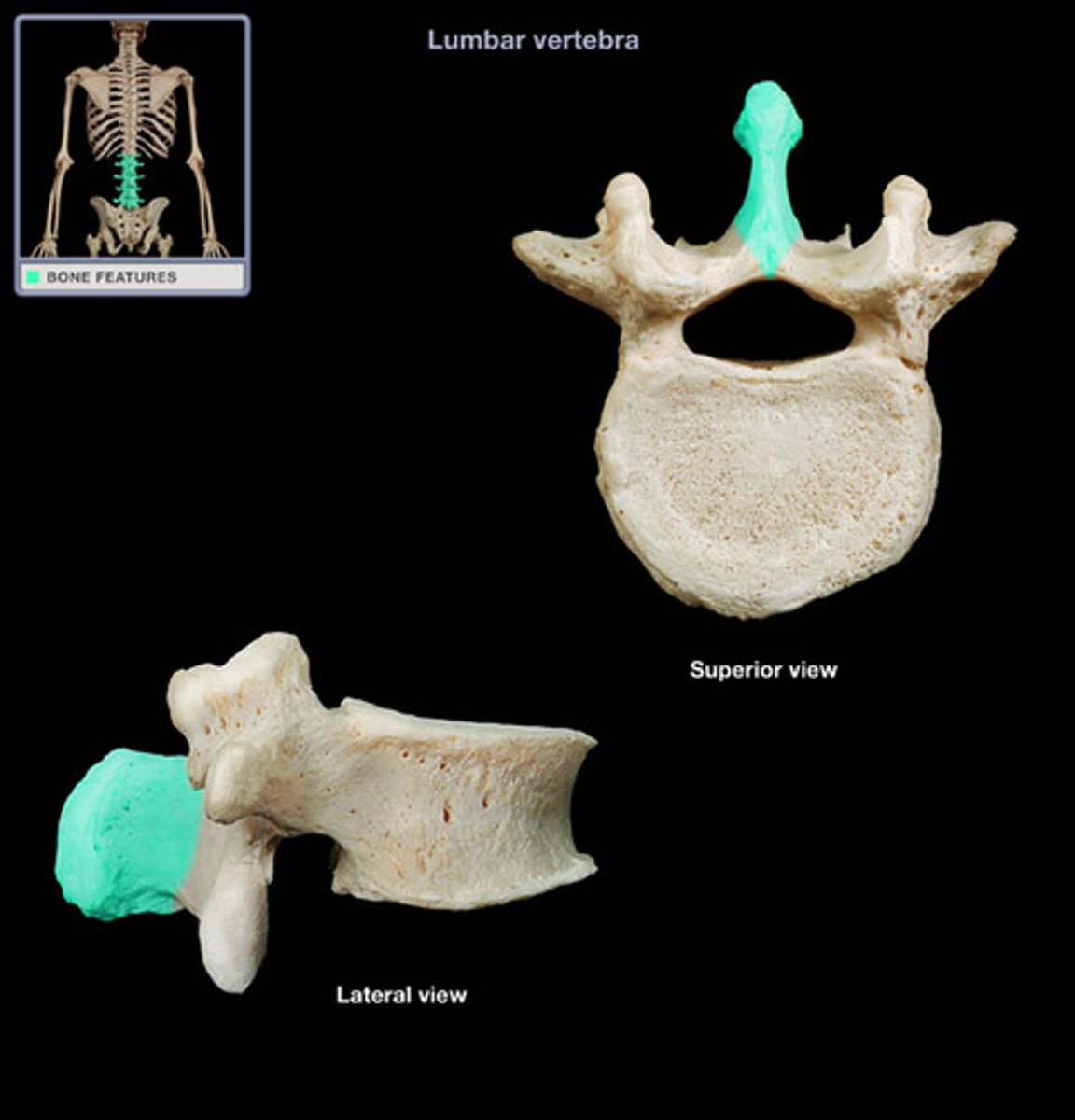
superior articular process
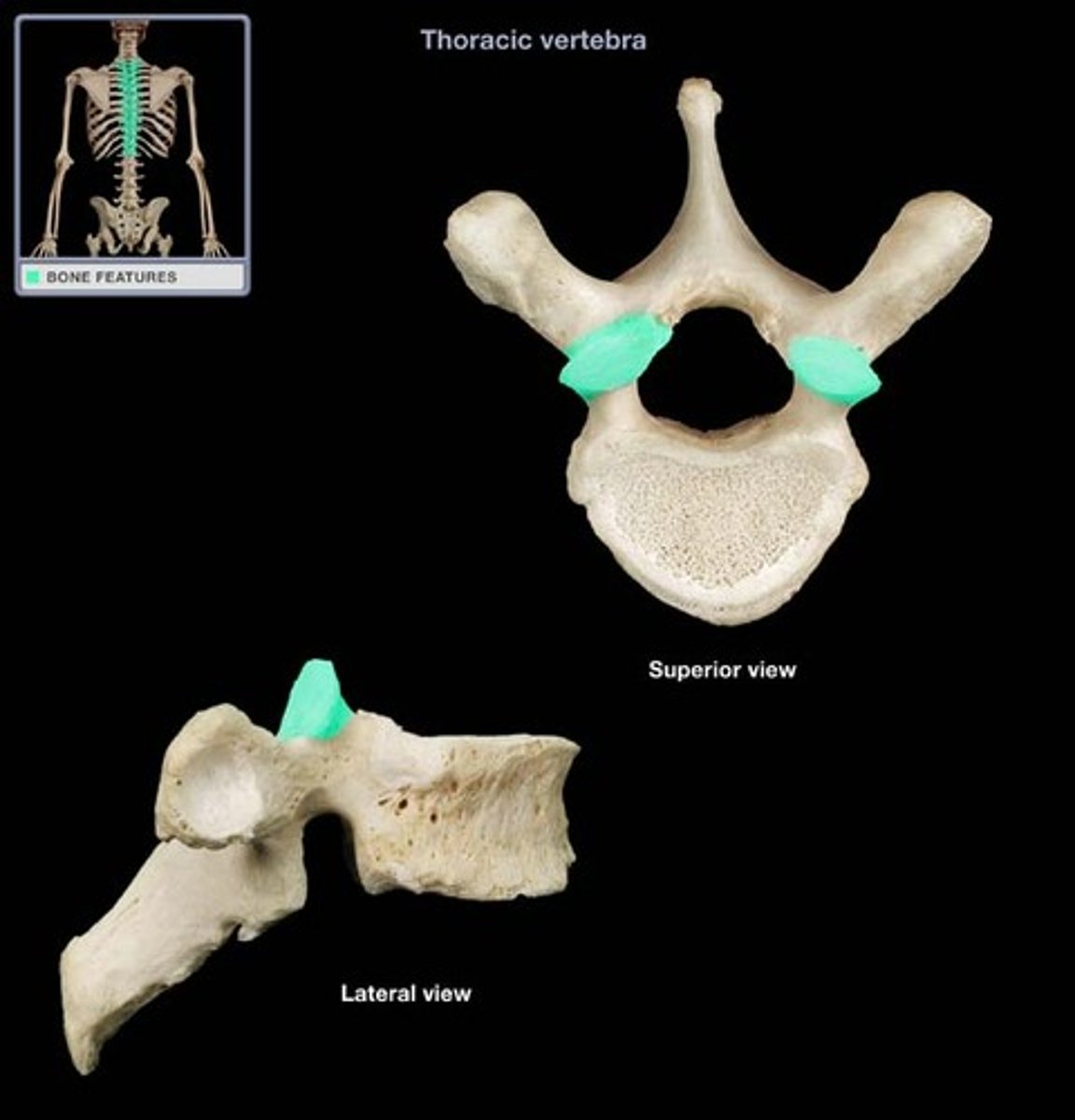
inferior articular process
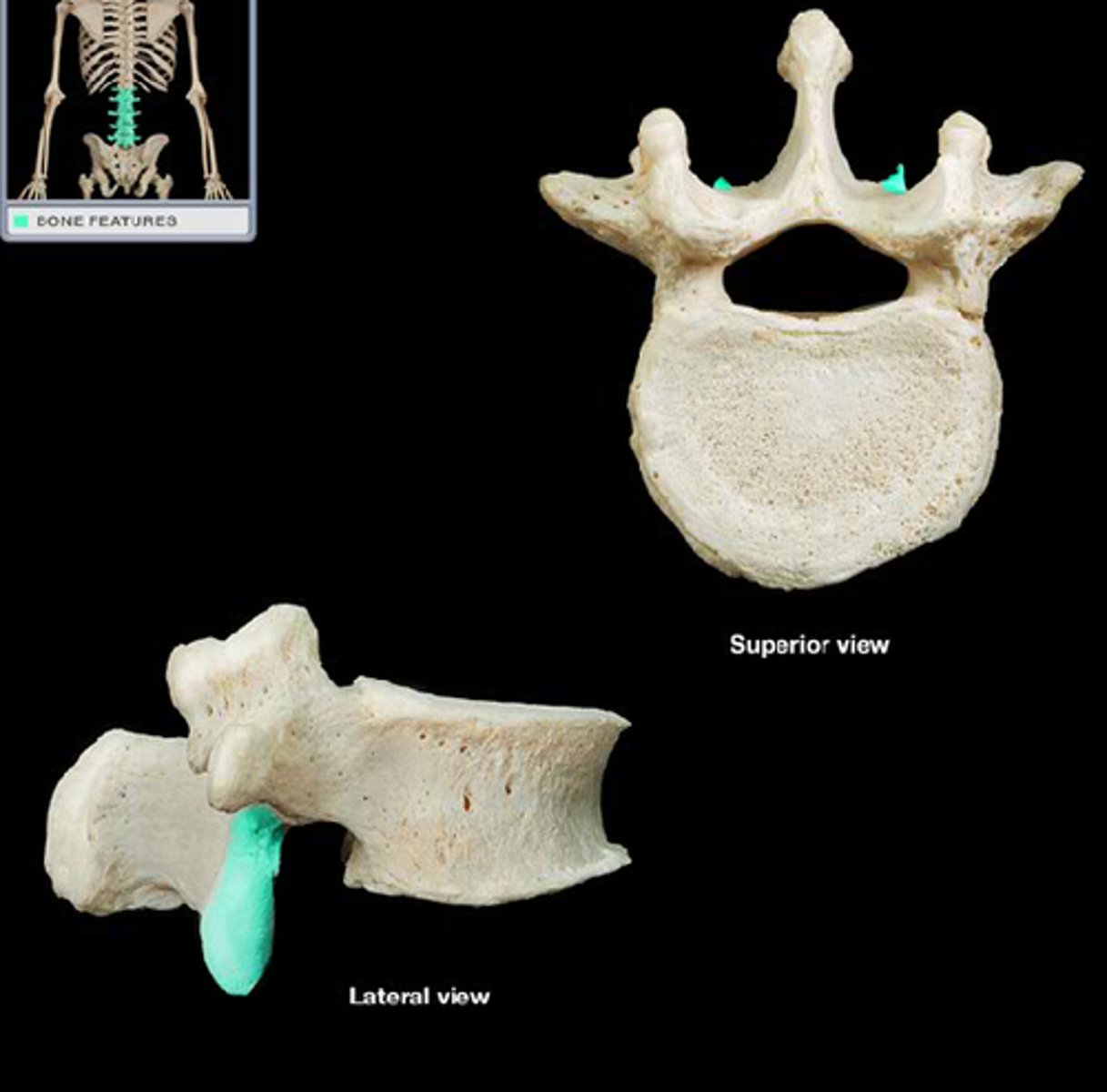
C1
the atlas, up and down motion
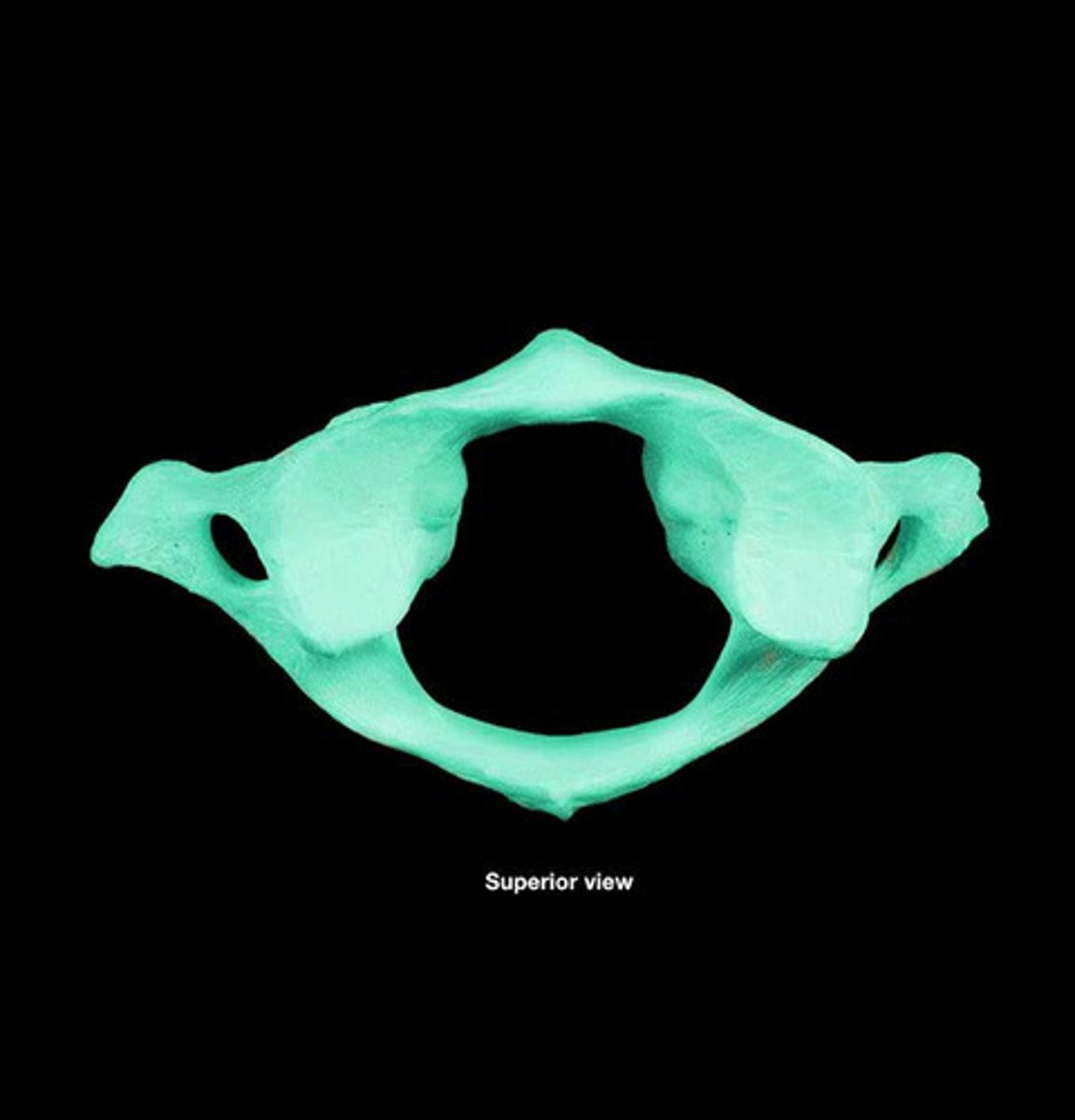
C2
the axis, dens, side to side motion
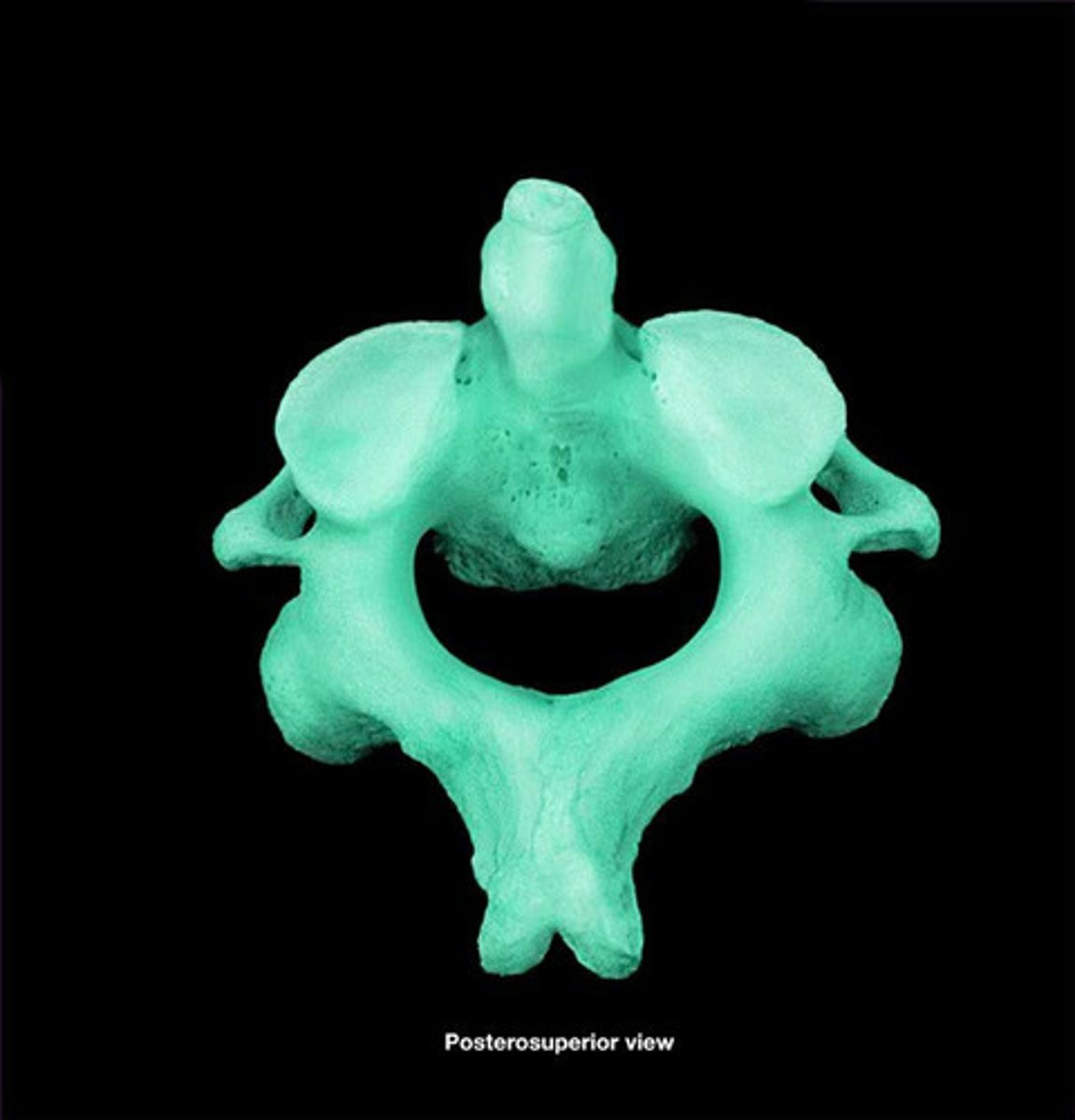
thoracic vertebrae
long, downward pointing spinous process
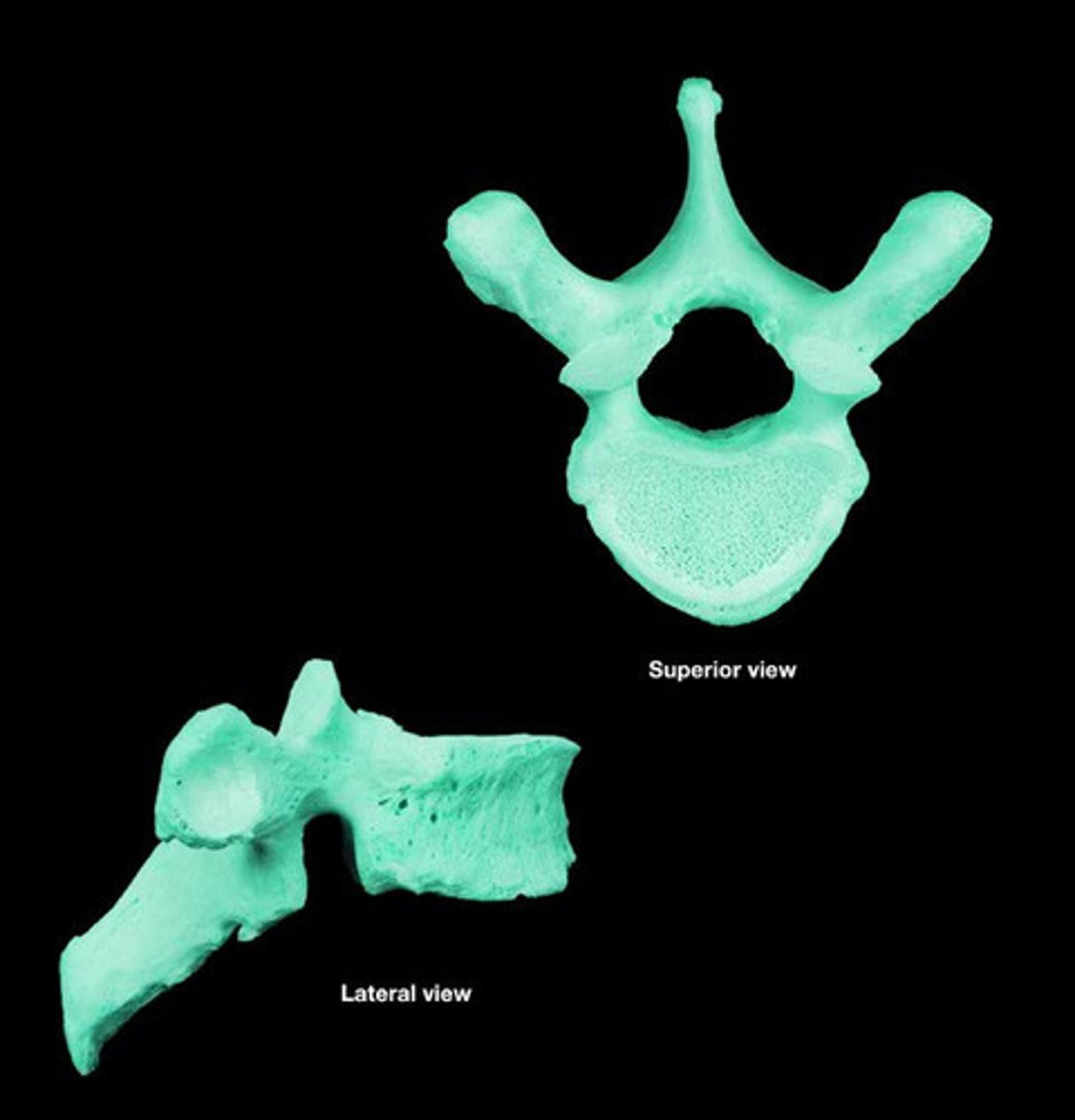
lumbar vertebrae
massive, block-like (thick) bodies with short, flat, and hatchet shaped spinous process
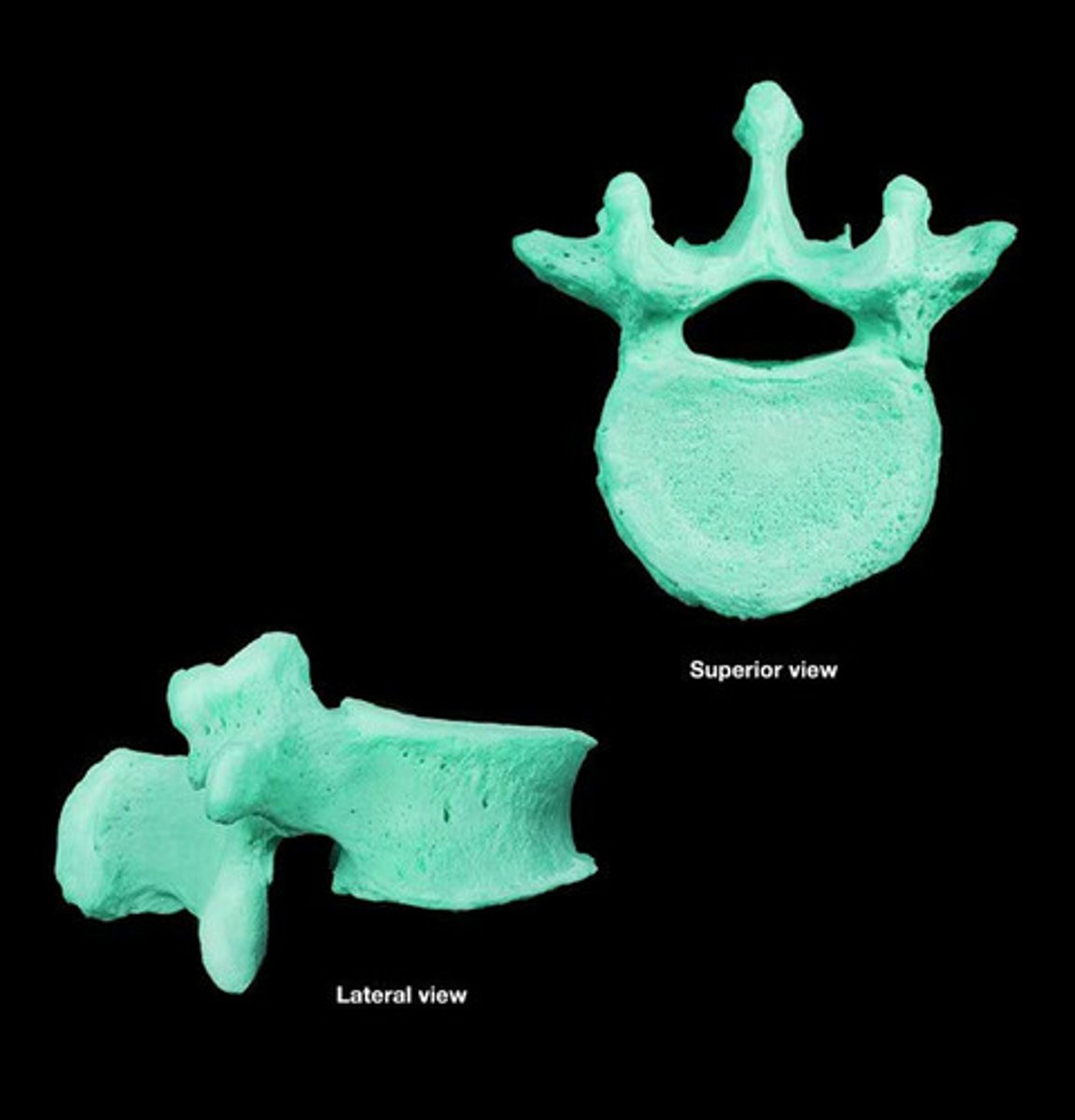
sacral canal
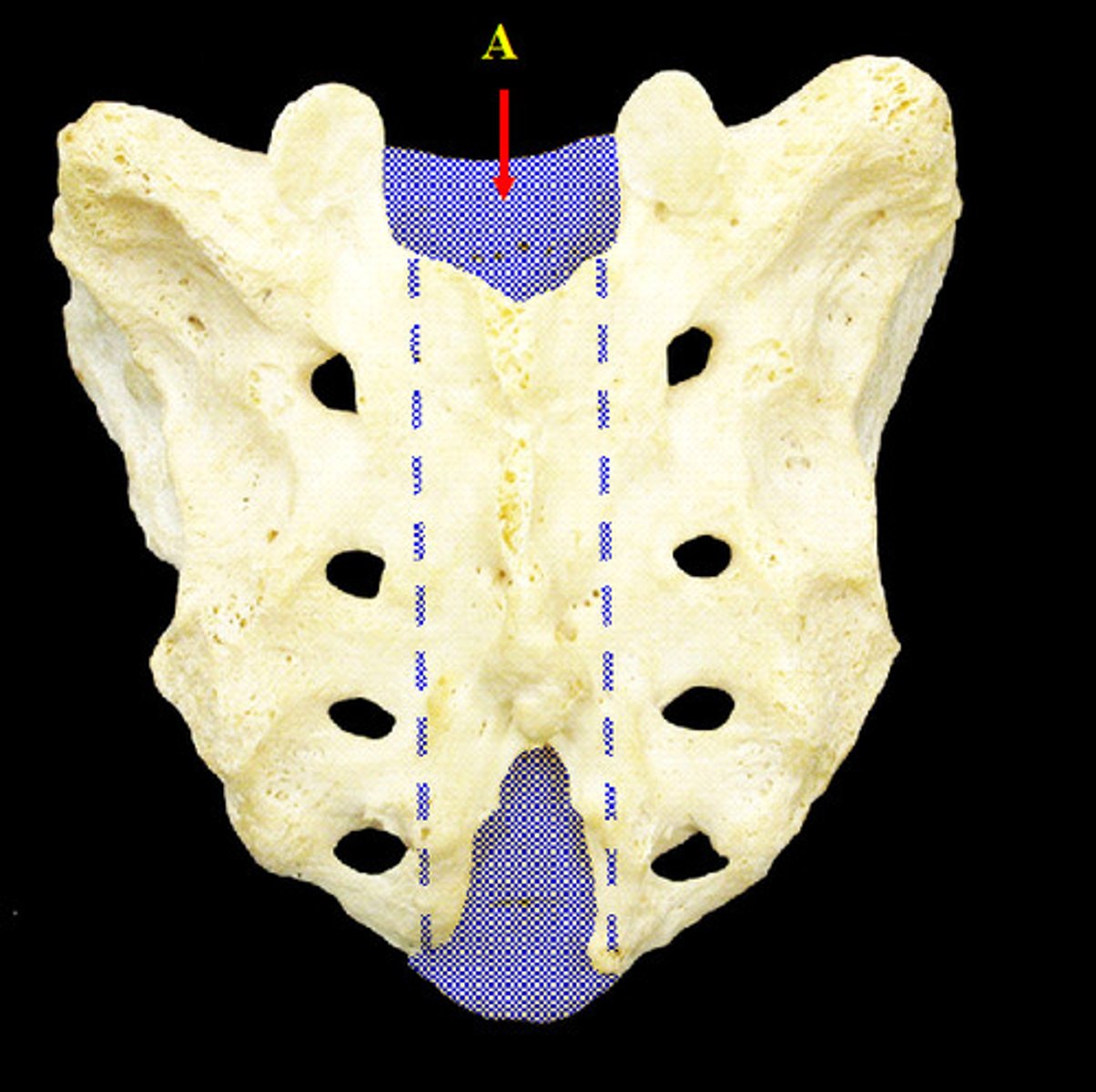
sacrum body
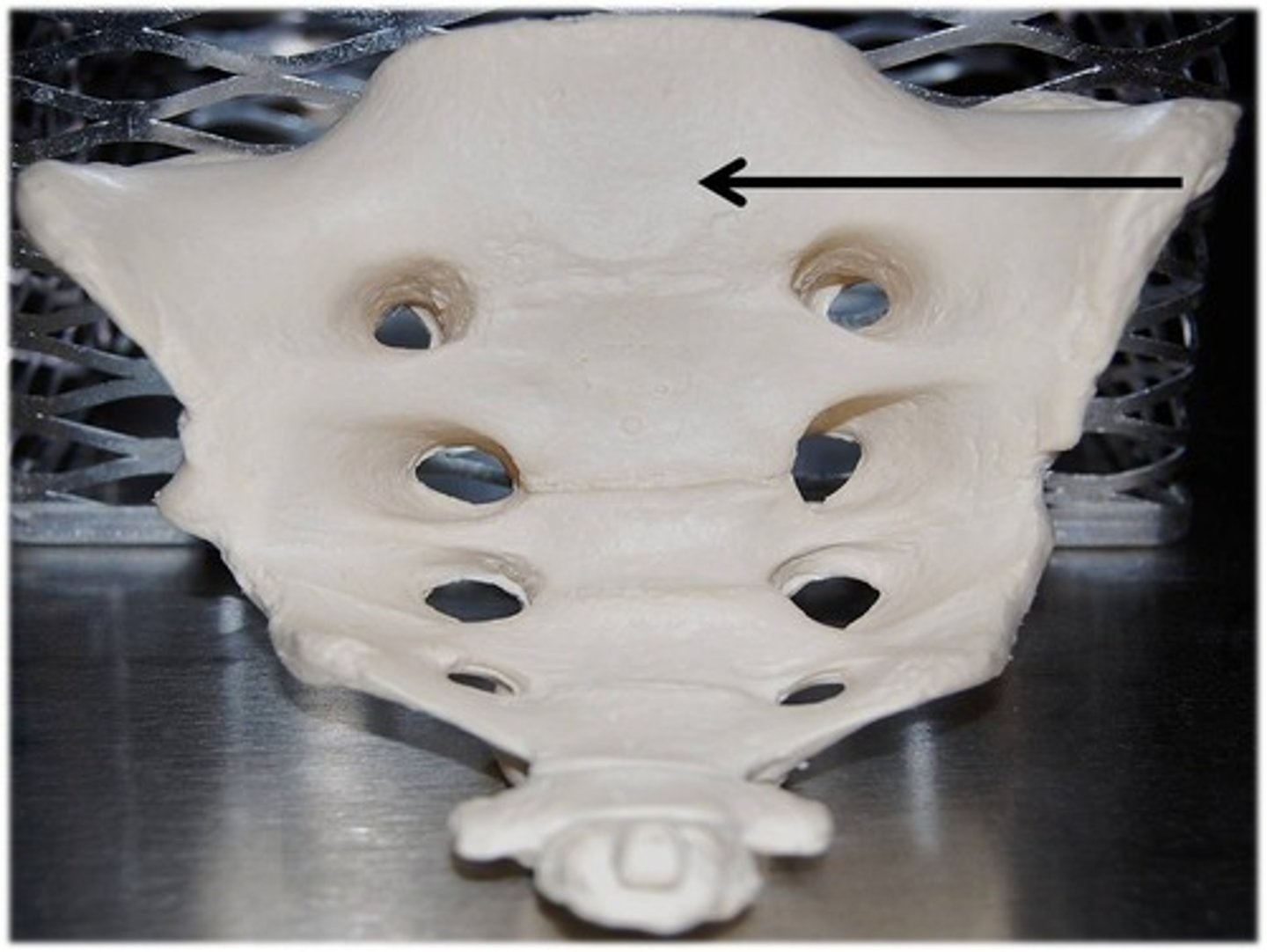
sacral promontory
superior, anterior rim projection of S1
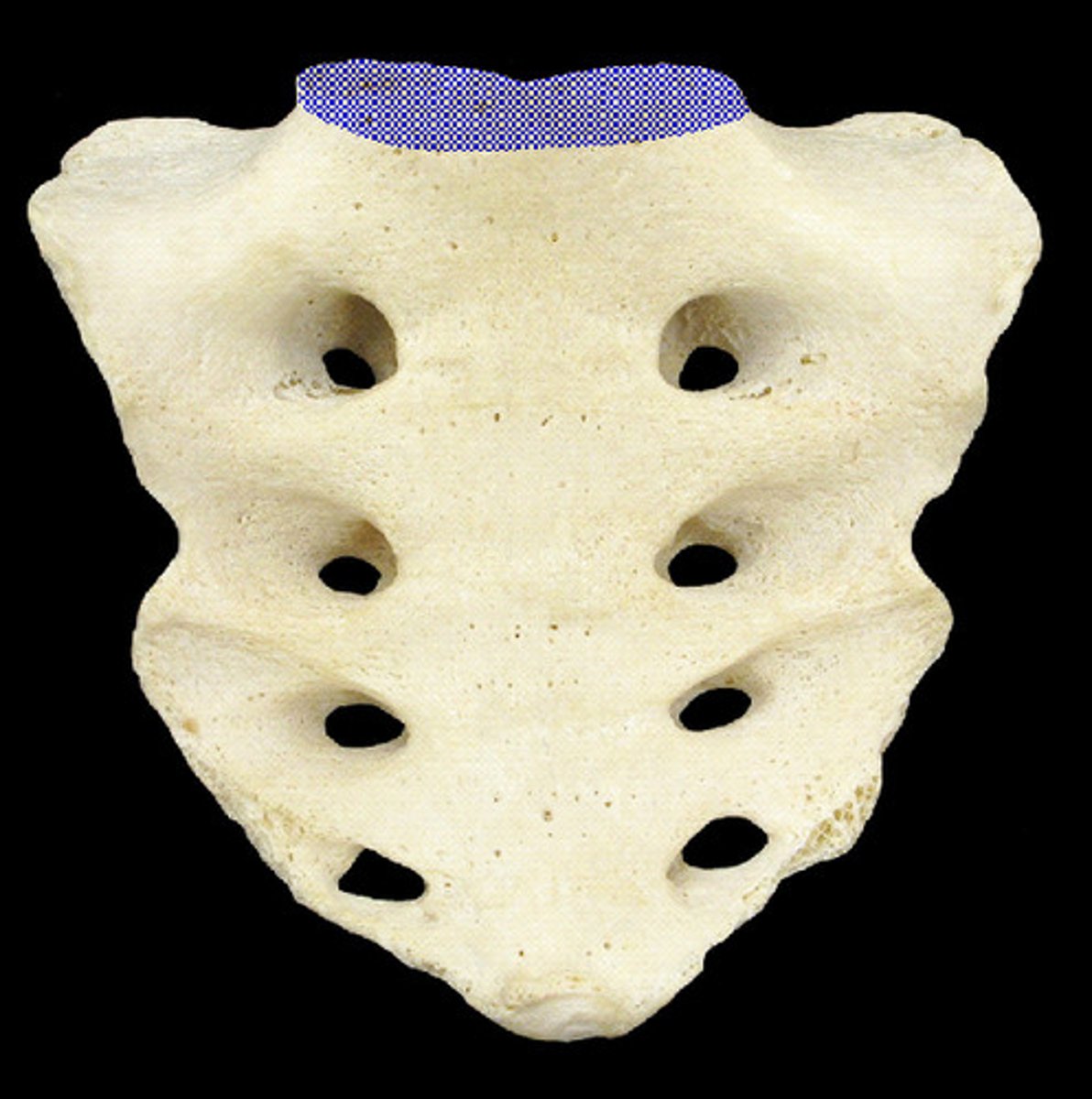
median sacral crest
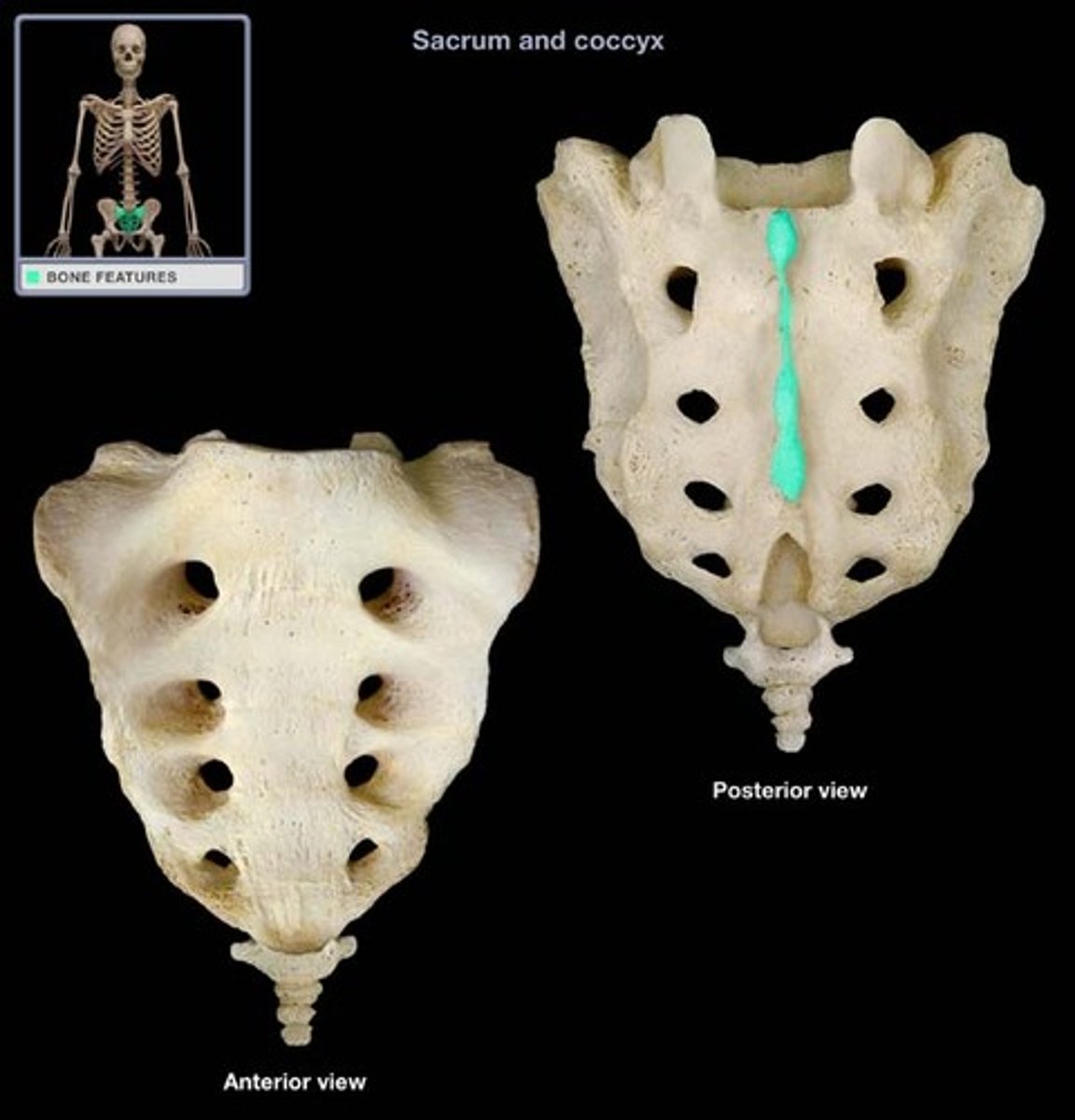
posterior sacral foramina
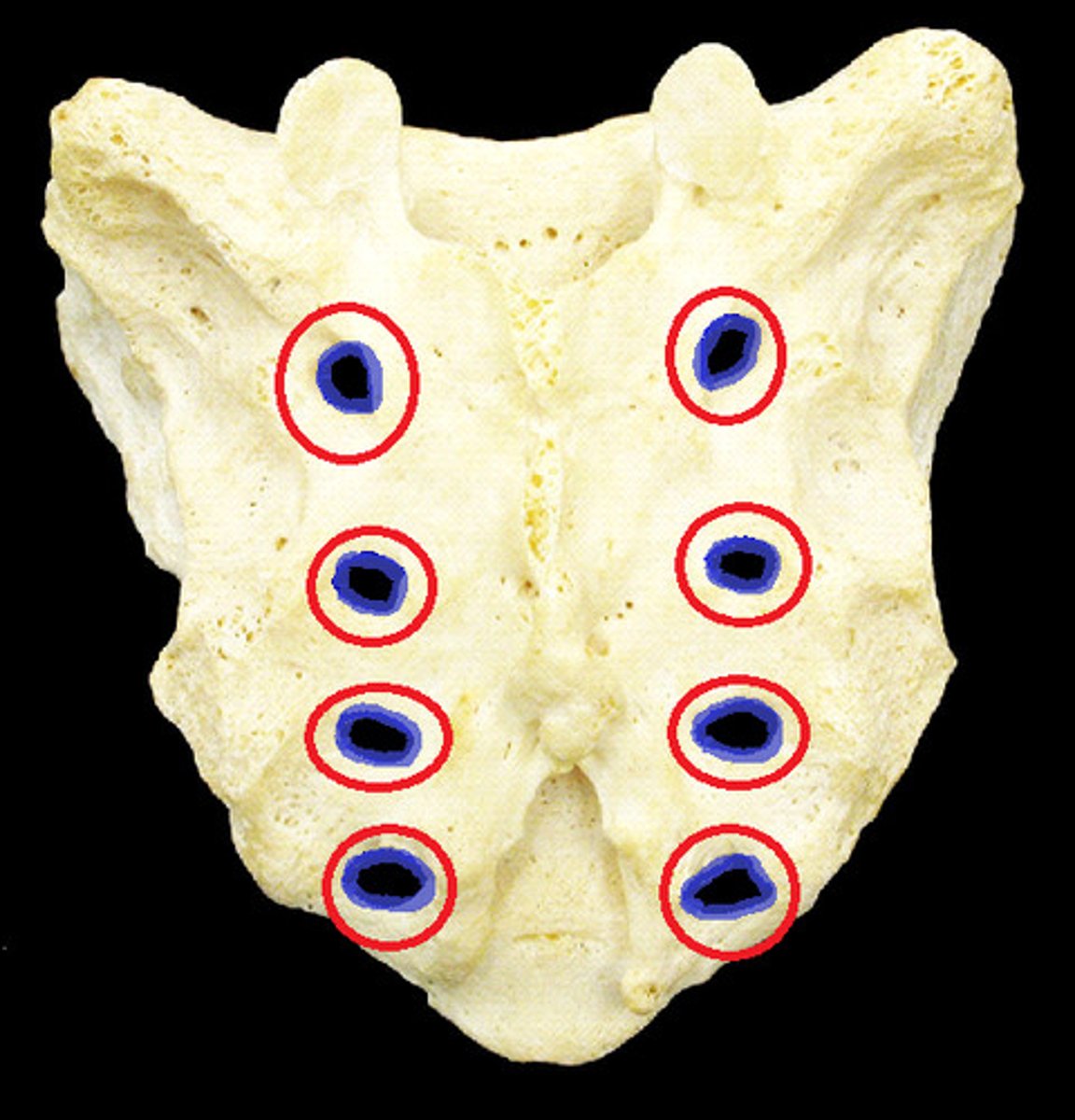
sacral hiatus
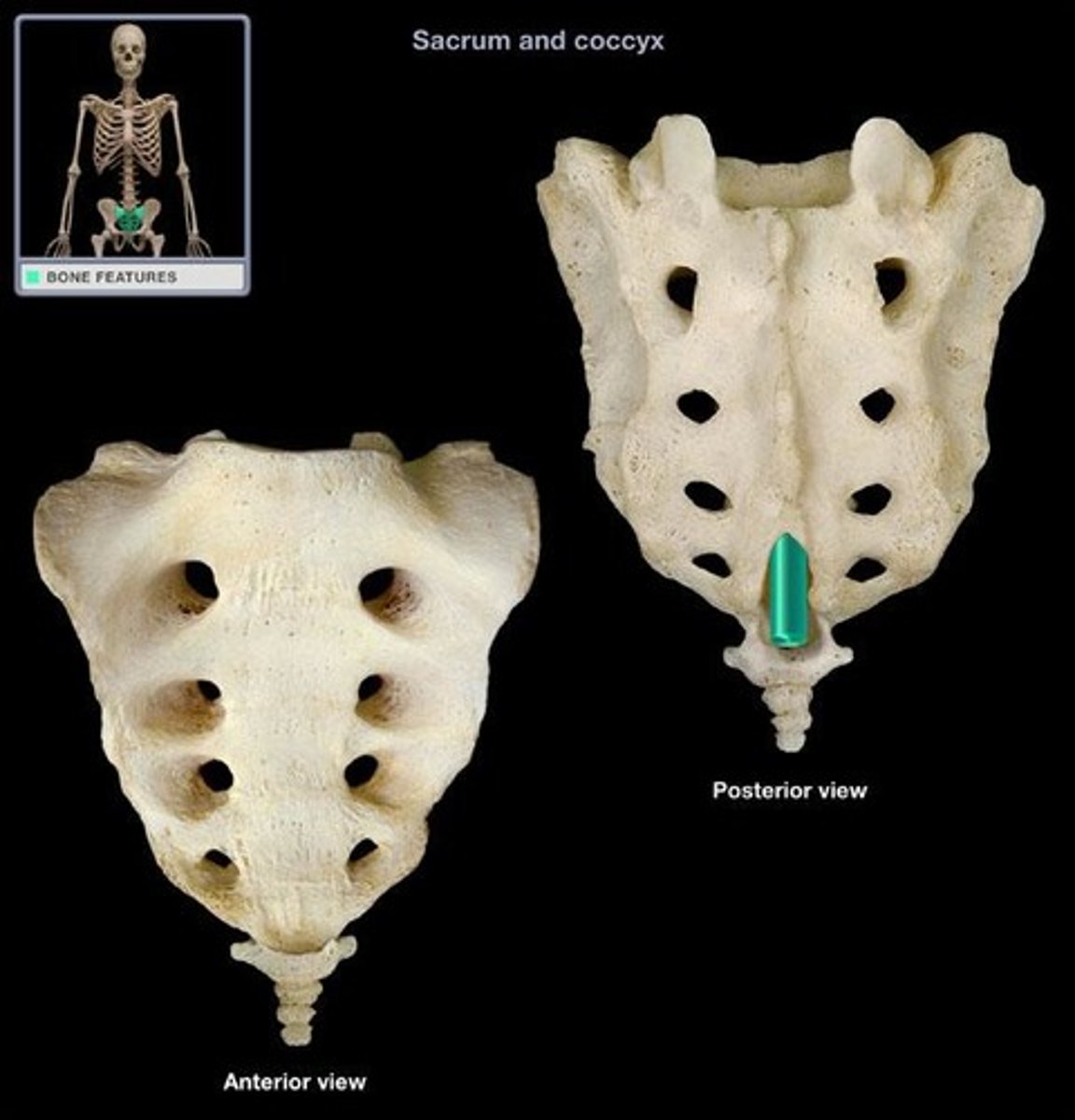
anterior sacral foramina
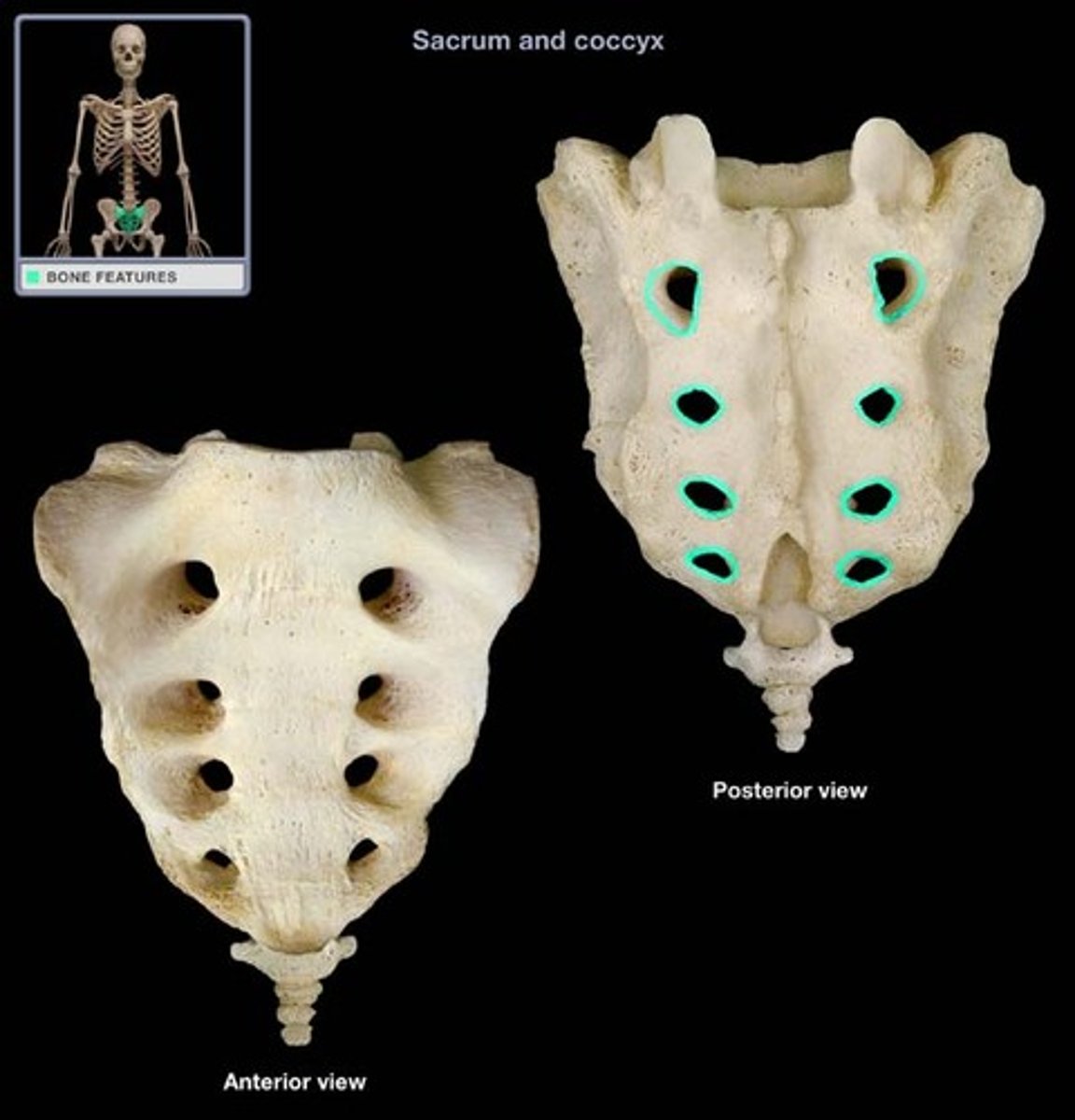
sternum
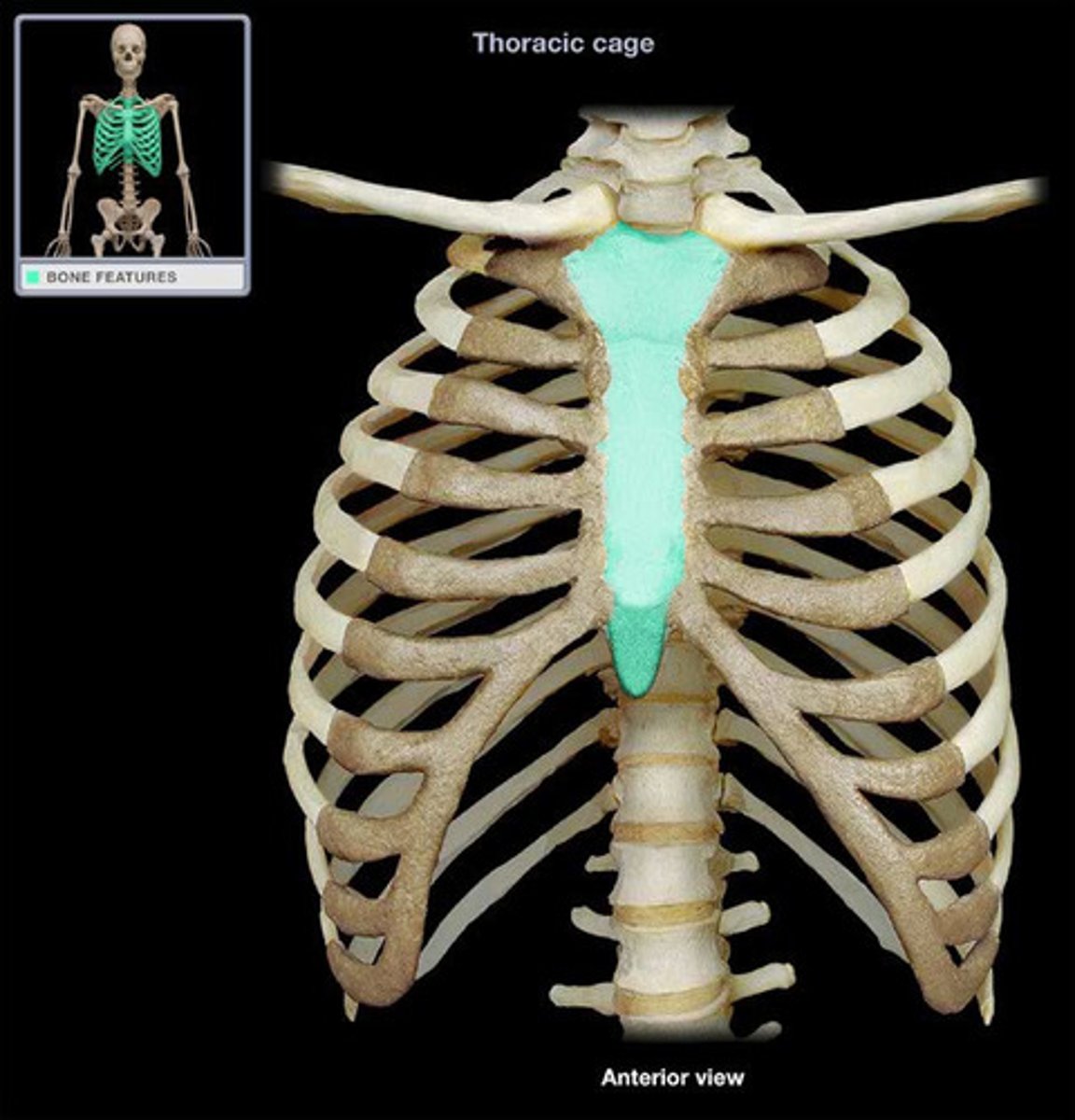
manubrium
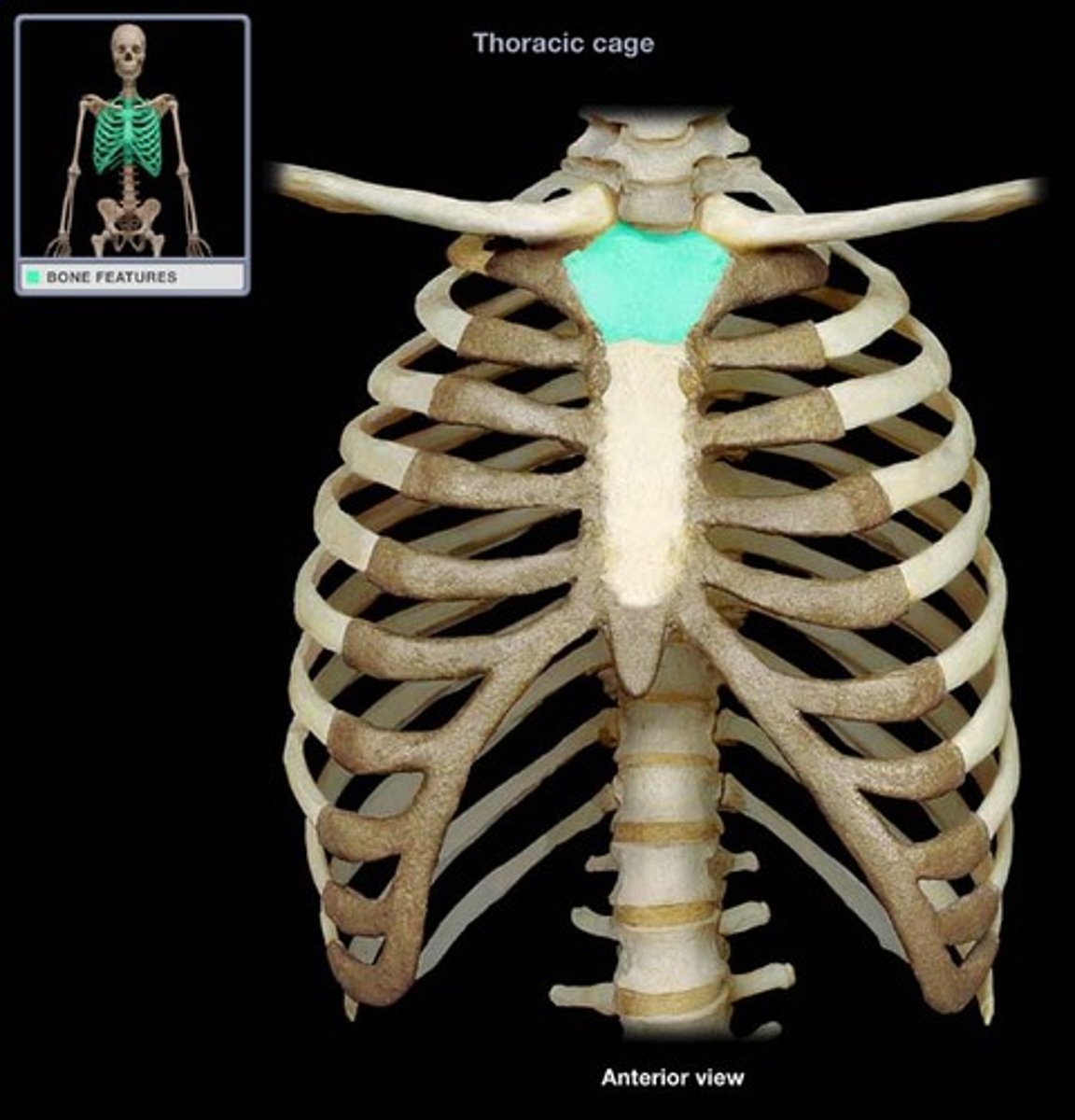
jugular notch
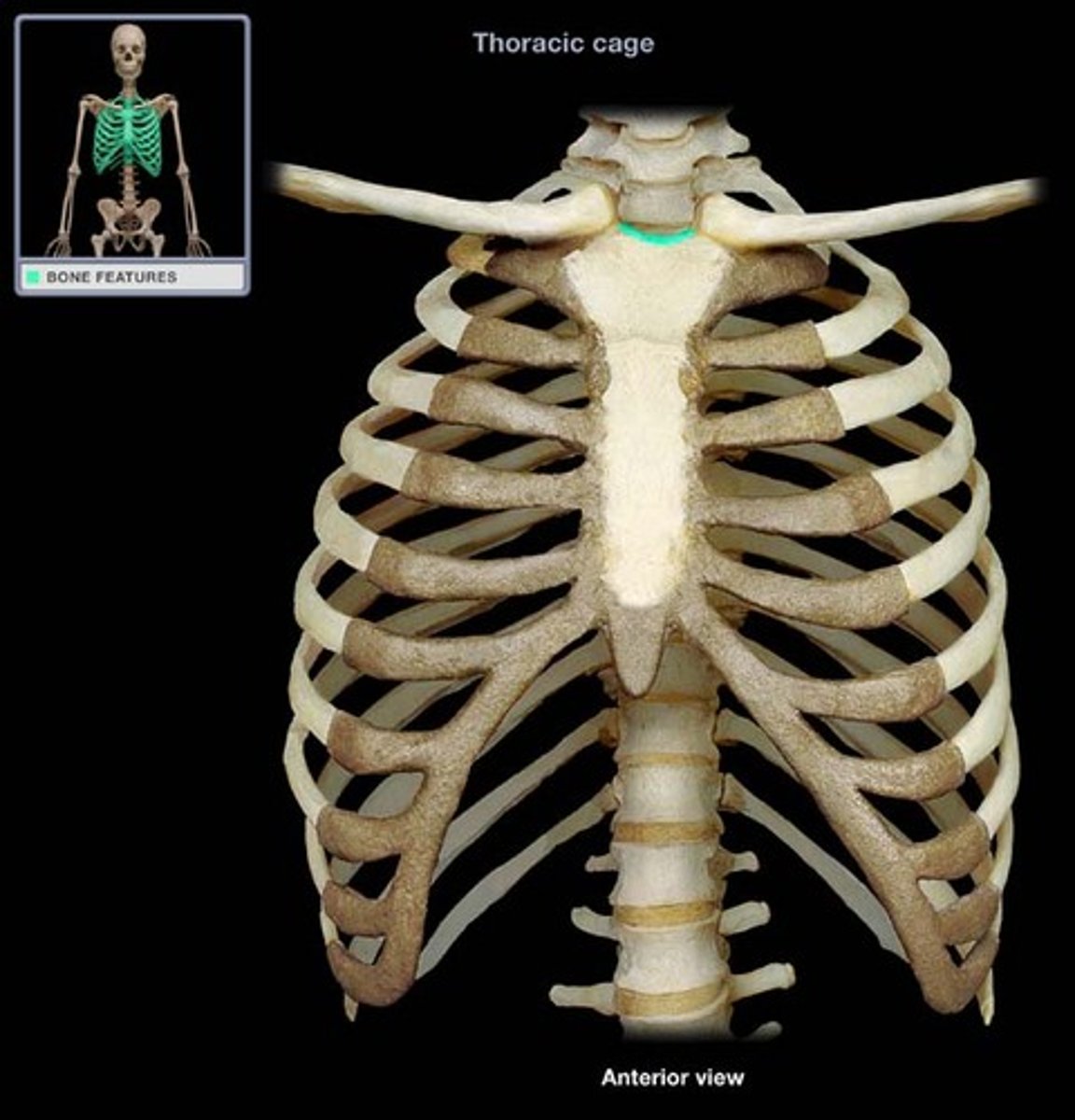
clavicular notch
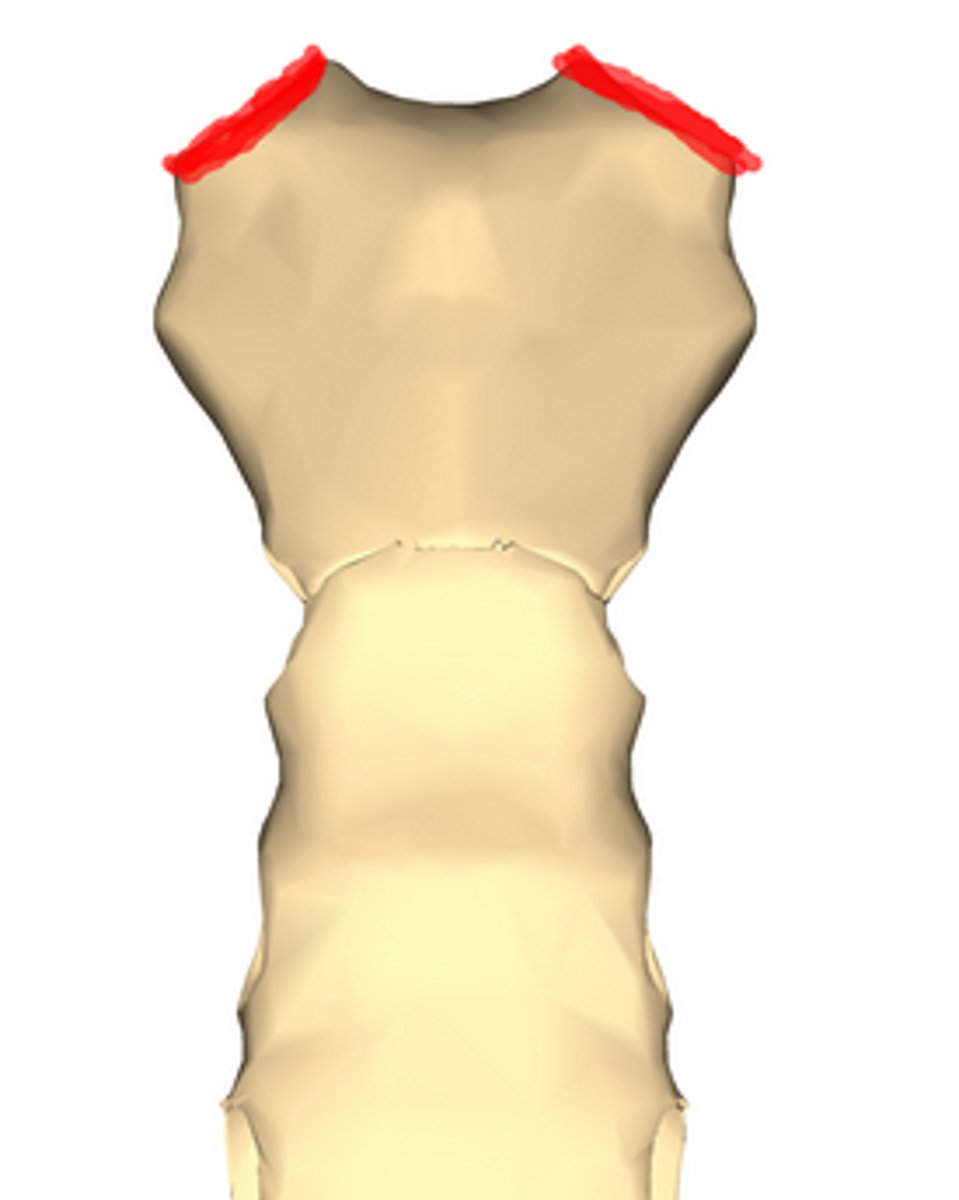
sternal angle
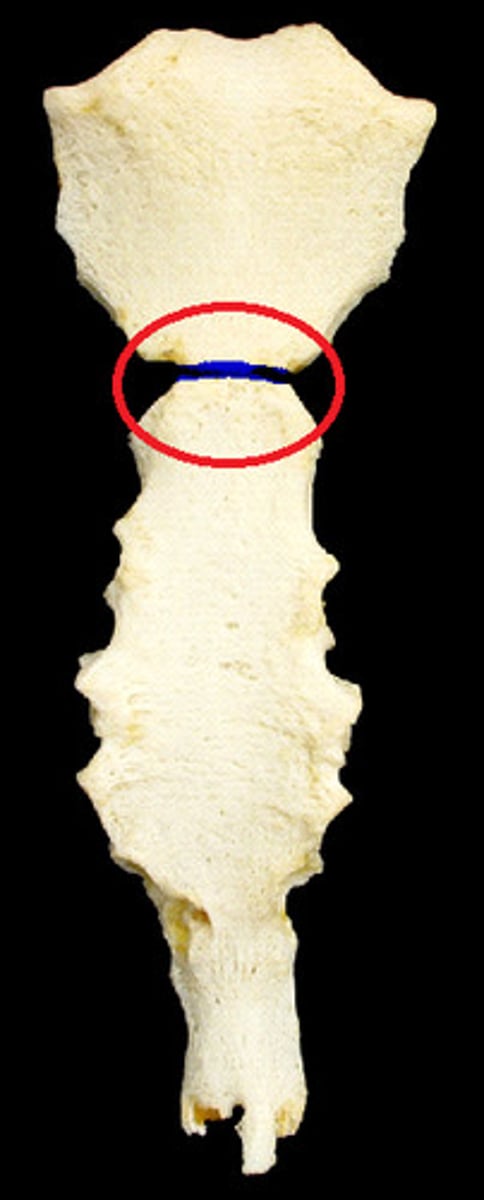
sternum body
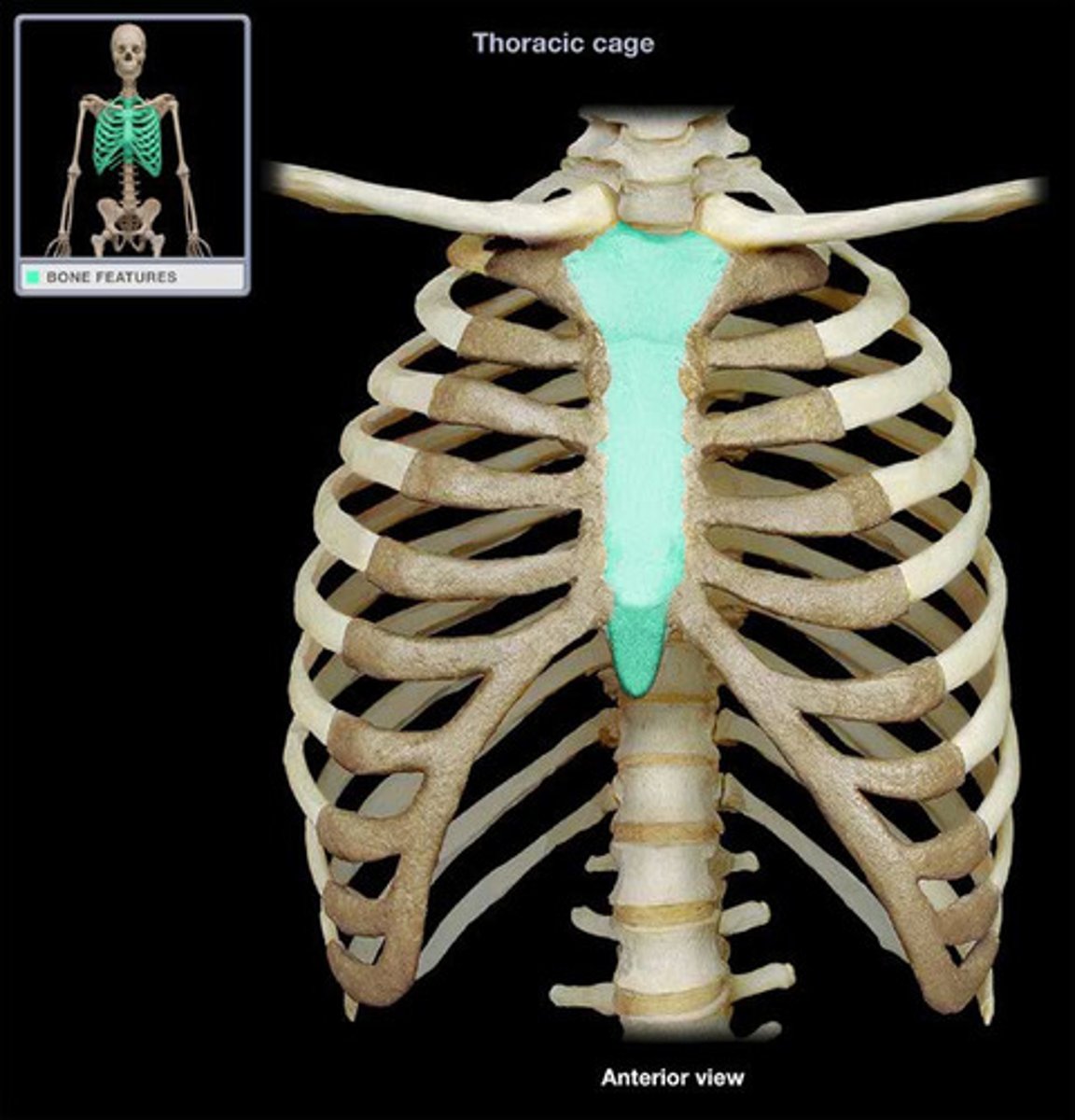
xiphoid process
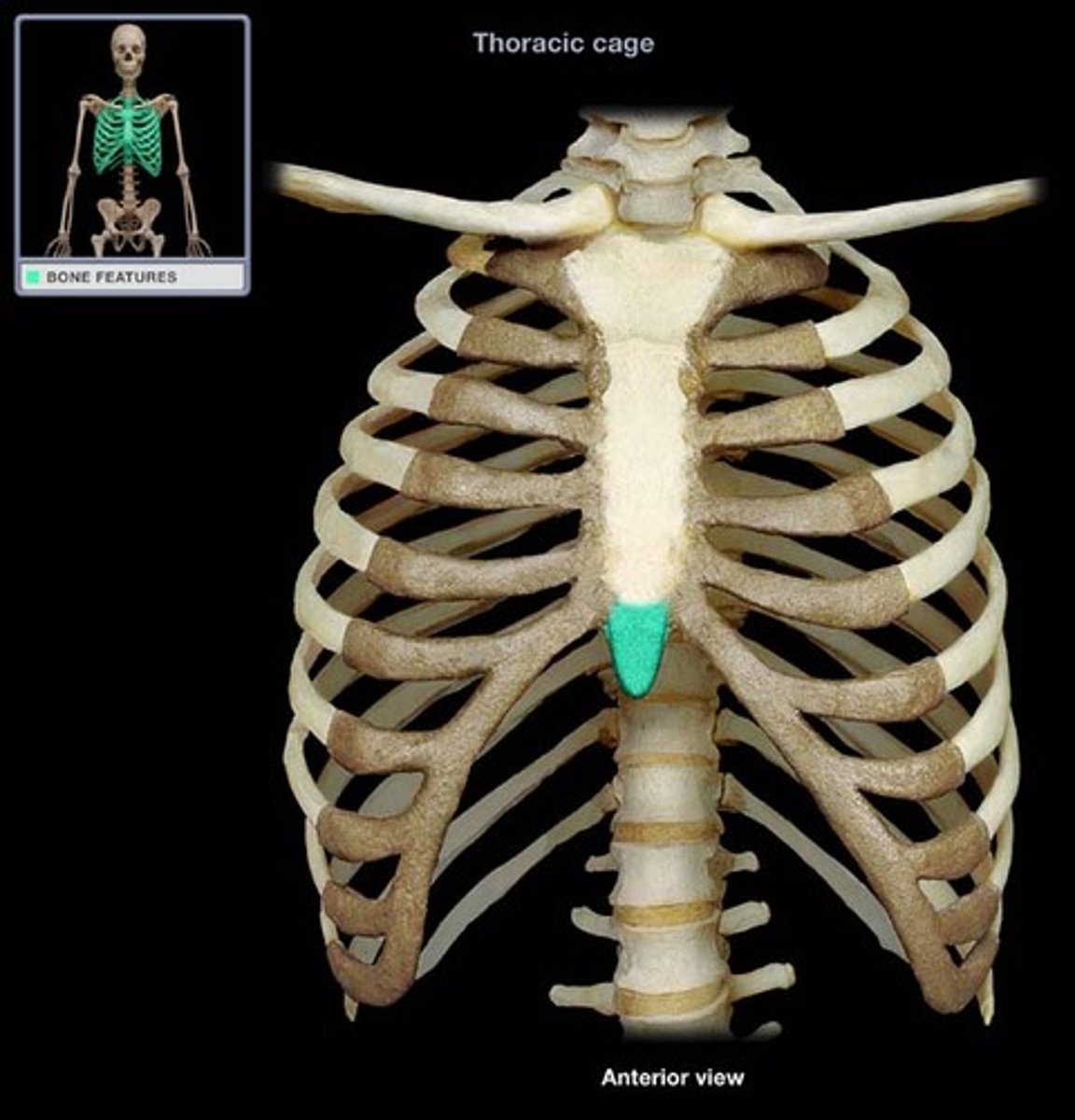
true ribs
attach directly to sternum via costal cartilage (7 pairs)
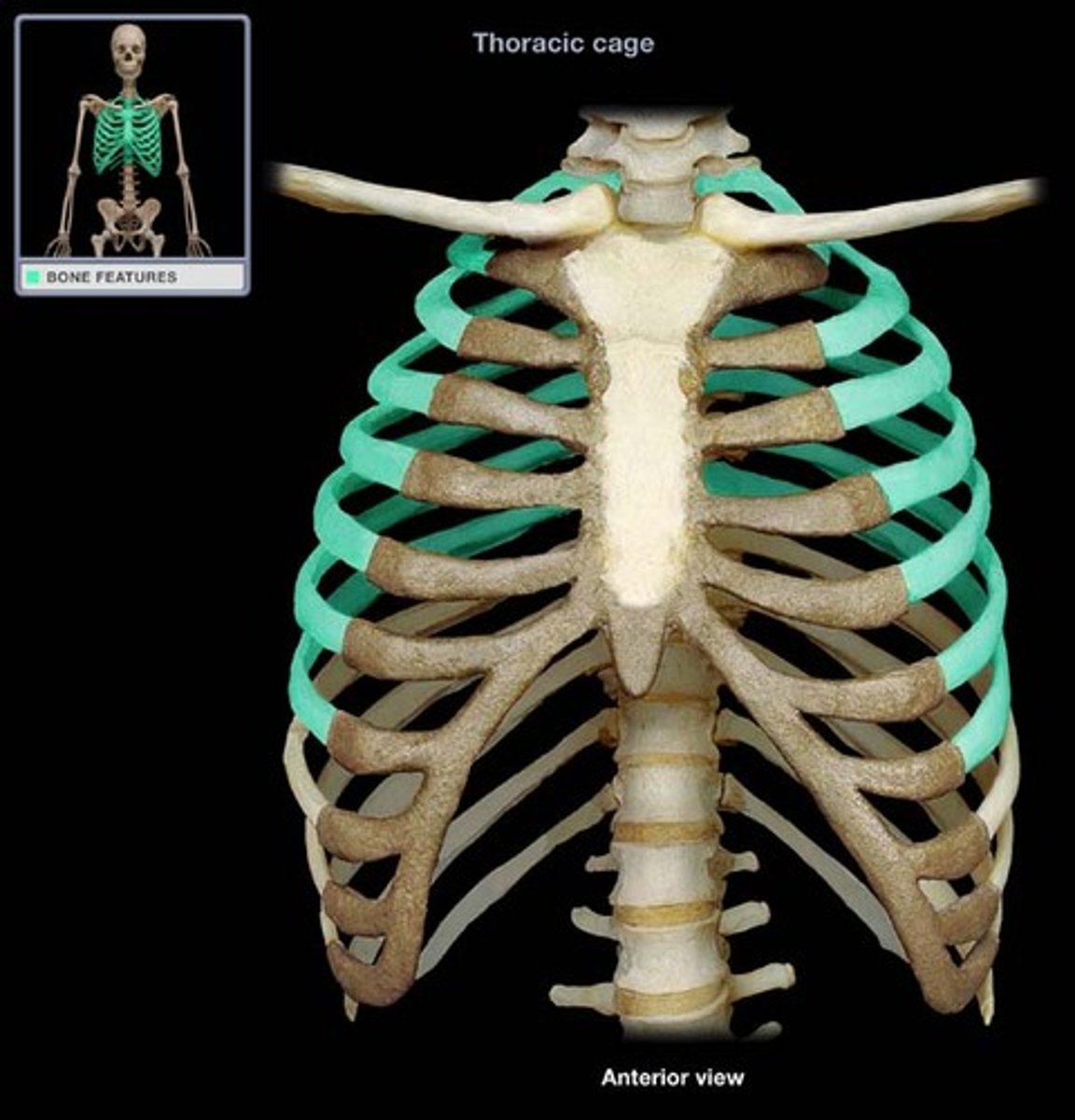
false ribs
attach indirectly to sternum (5 pairs)
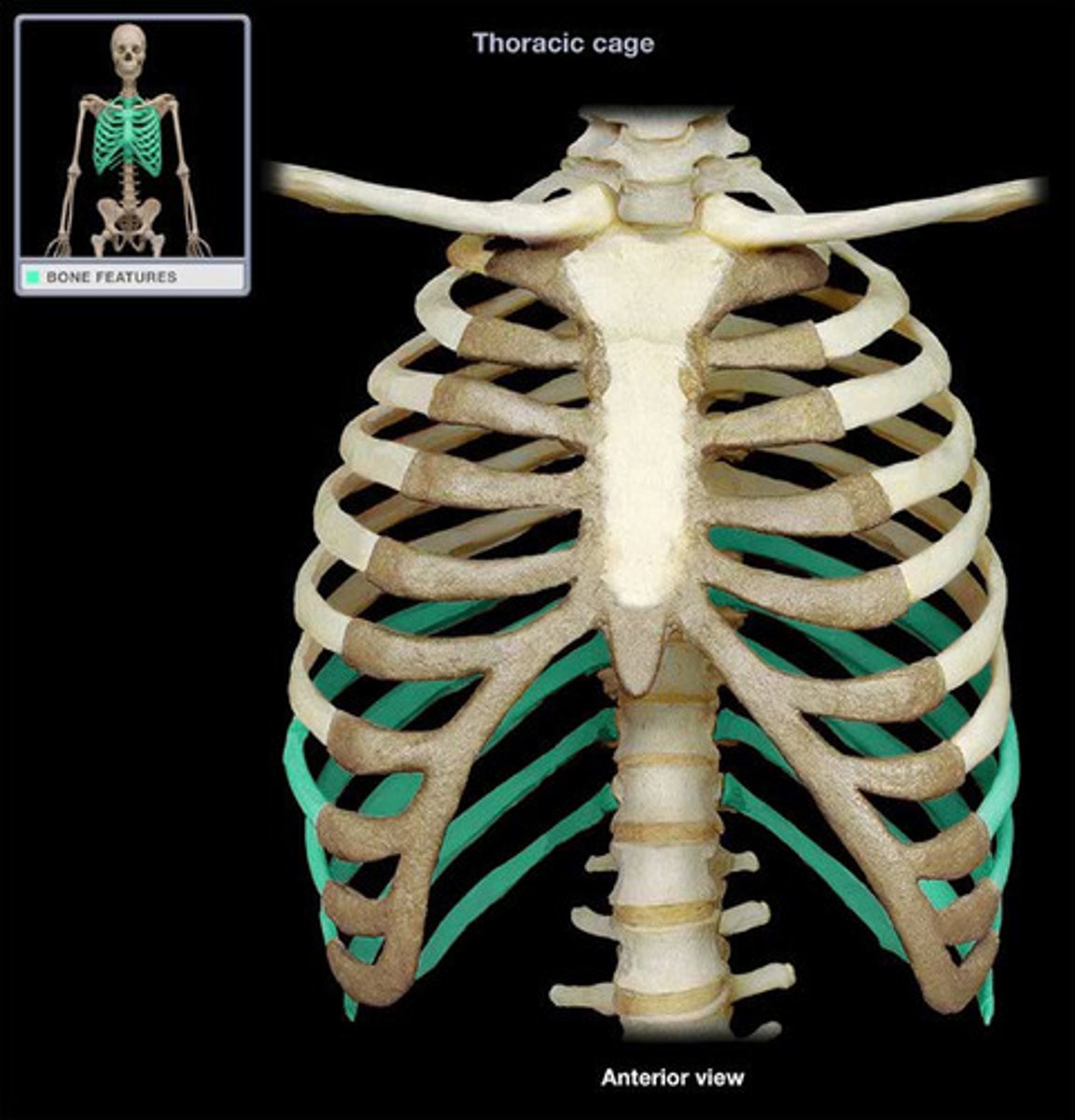
Floating ribs
no sternal attachment
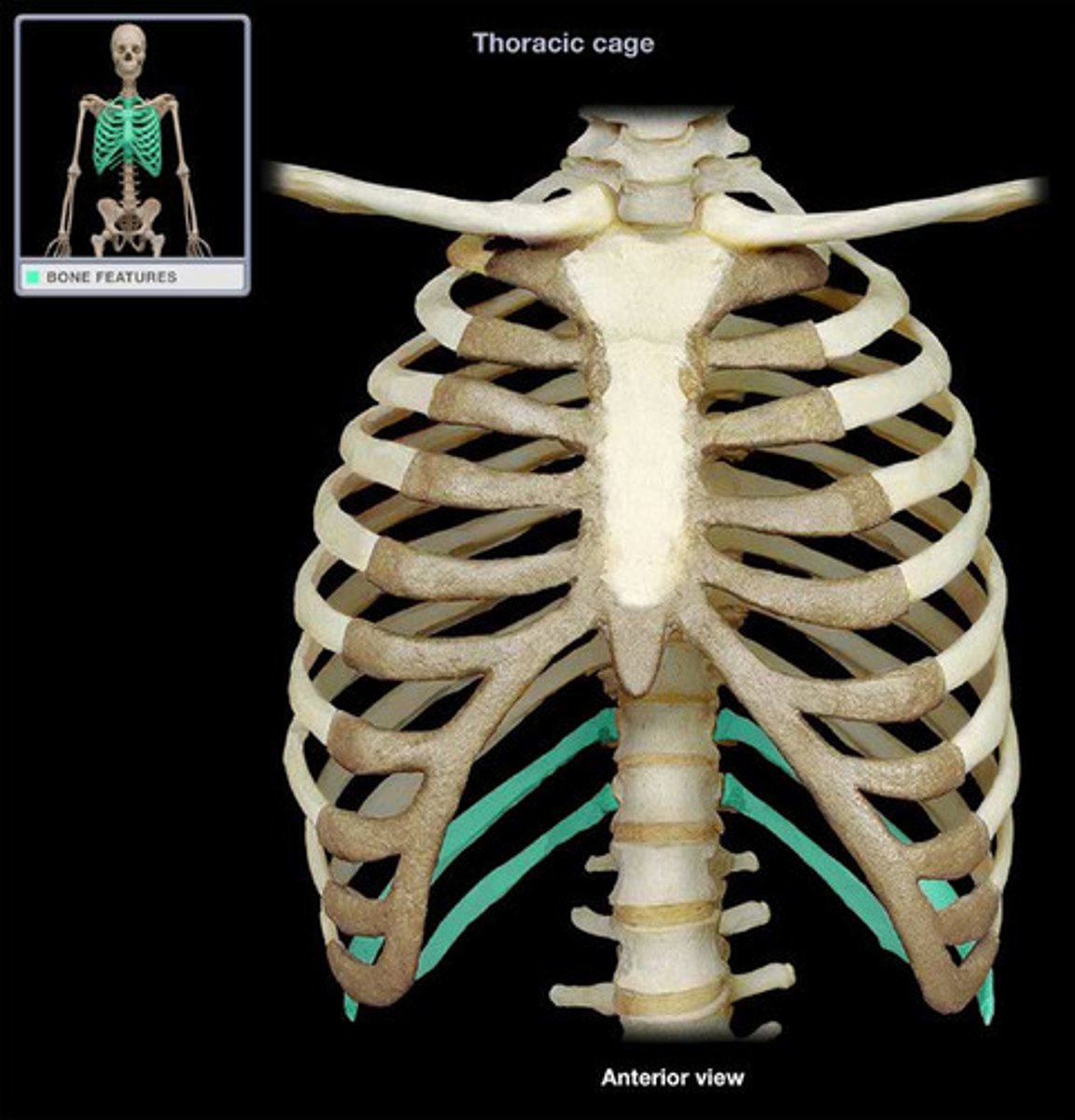
rib head
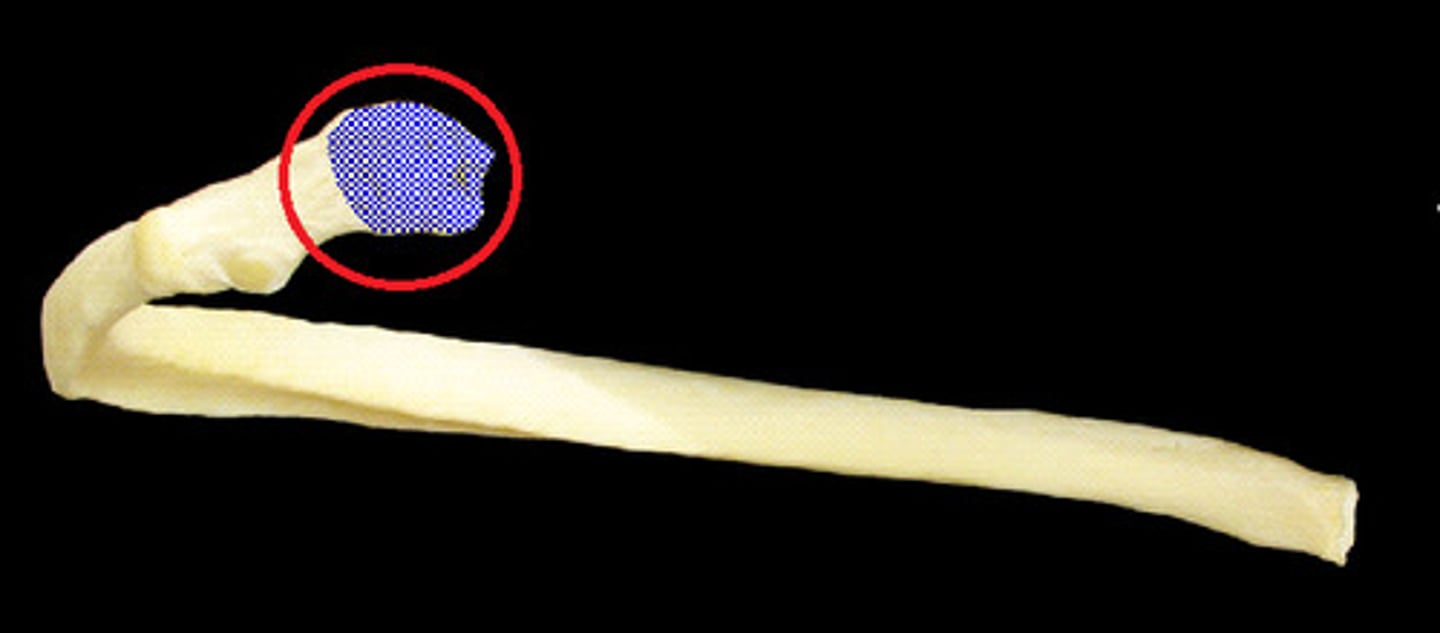
rib neck
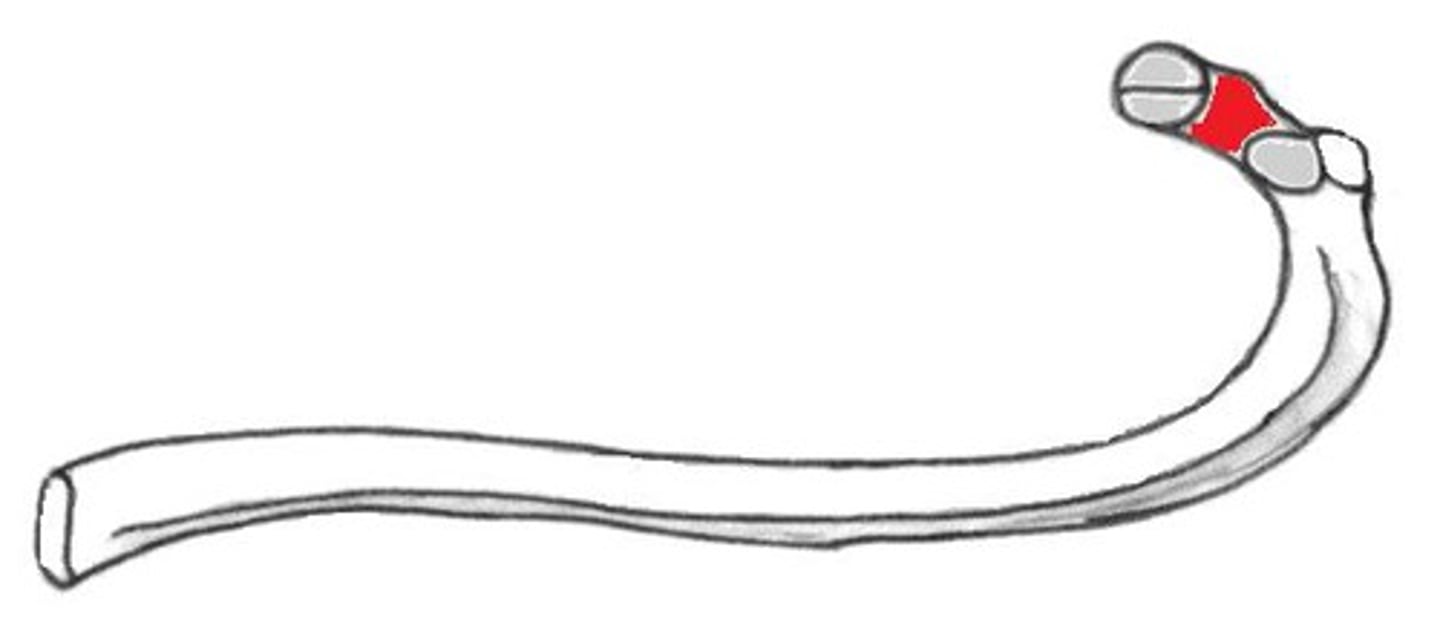
rib tubercle
small rounded process of rib that articulates with thoracic vertebrae
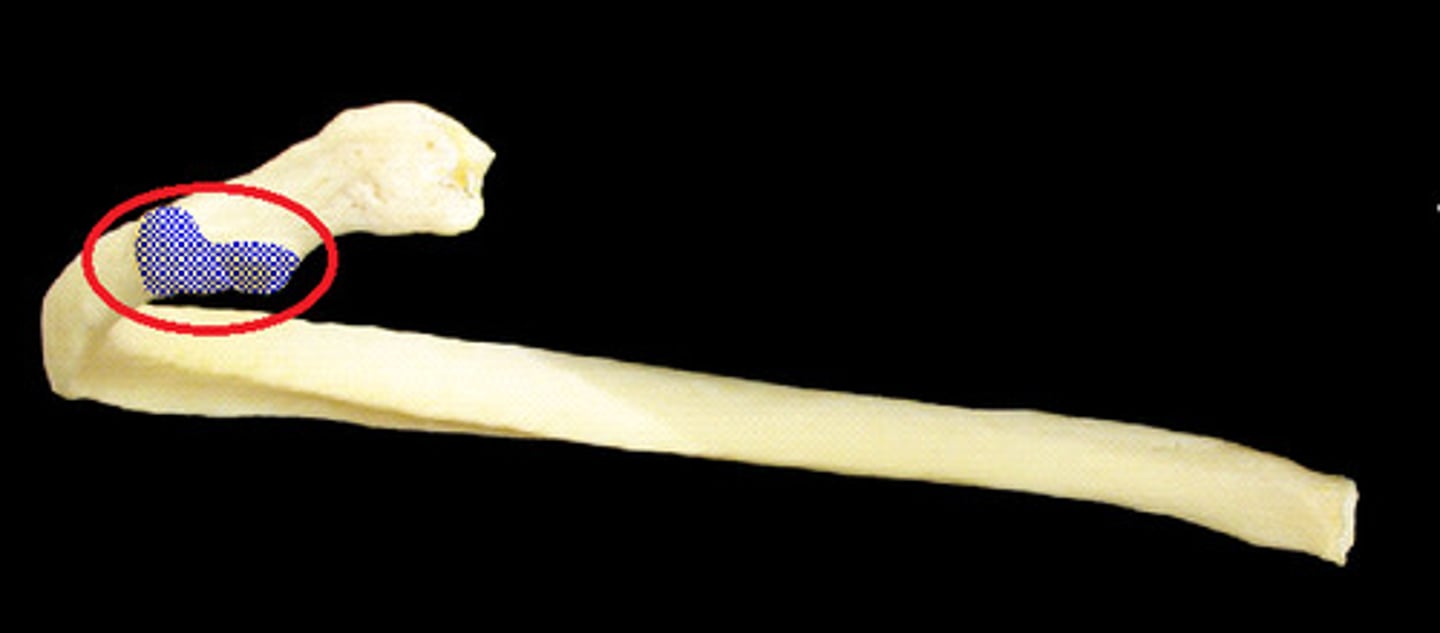
rib angle
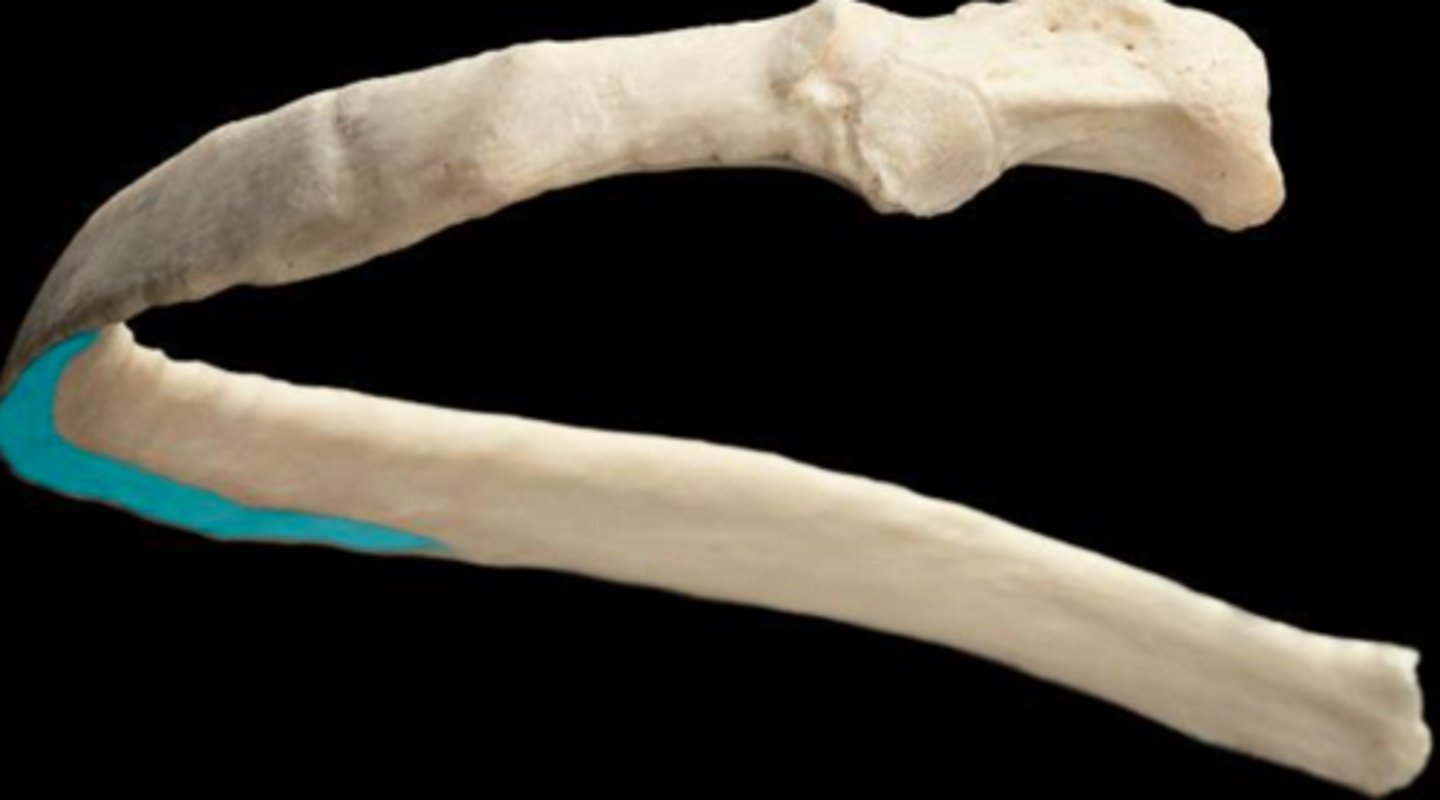
rib body/shaft
